E.G. Wolverson's Blog, page 4
January 5, 2020
TV Review | Doctor Who: Spyfall by Chris Chibnall
 Topping last year’s New Year’s Day special, “Resolution”, was a tall order, yet Chris Chibnall’s season-opening Spyfall has somehow managed it. The preceding run of stories had been a watershed for the programme, changing almost everything that had been a staple of it since Russell T Davies’ 2005 reboot and, in some aspects, long before. But despite tearing up the rulebook, Jodie Whittaker’s first year in the TARDIS boasted some of the programme’s greatest-ever episodes. Now, having clearly established the show’s new and contemporary aesthetic, Chibnall seems to be turning to the past to deliver something that’s substantially more fan-friendly, yet still immediately accessible to new and casual viewers. If this opening two-part adventure is anything to go by, Chibnall might just have perfected his recipe.
Topping last year’s New Year’s Day special, “Resolution”, was a tall order, yet Chris Chibnall’s season-opening Spyfall has somehow managed it. The preceding run of stories had been a watershed for the programme, changing almost everything that had been a staple of it since Russell T Davies’ 2005 reboot and, in some aspects, long before. But despite tearing up the rulebook, Jodie Whittaker’s first year in the TARDIS boasted some of the programme’s greatest-ever episodes. Now, having clearly established the show’s new and contemporary aesthetic, Chibnall seems to be turning to the past to deliver something that’s substantially more fan-friendly, yet still immediately accessible to new and casual viewers. If this opening two-part adventure is anything to go by, Chibnall might just have perfected his recipe.Although we still must endure an ill-fitting picture format, the series has reinstated a few things that I really missed last season, beginning with a pre-title sequence. Structurally, Doctor Who stories generally benefit from a teaser, and particularly with stand-alone episodes it also gives the series an opportunity to mimic that all-important cliffhanger feeling. Of course, being the first two-part story since 2017, Spyfall didn’t have to worry too much about that – its first episode’s thrilling climax more than makes up for lost time with its irresistible fusion of double-threat jeopardy and shocking revelation. Perhaps most significantly though, Spyfall marks a return to the old “Bad Wolf” style of storytelling that has riveted hardcore viewers for nearly fifteen years now. This one might be a two-parter in name, but it feels like just the start of a story that’s much bigger.

With its brazen 007 gimmick and both Stephen Fry and Lenny Henry on its well-publicised cast list, Spyfall’s opening instalment certainly has the requisite festive-special feel despite technically being a season premiere. Chibnall takes great delight in milking and then subverting just about every spy-film staple out there, without ever once tarnishing the Who-ishness of the whole affair. M becomes C and Q becomes O in a loving emulation of Bond that tips over into cryptic, phonic clues which leave viewers thinking that their own codenames should be R once the pennies have dropped. Graham doesn’t slaughter Barton’s heavies with his laser shoes, he scares them off; the Doctor doesn’t seduce, she accuses. It all feels so effortlessly exhilarating and hilarious that I can’t believe the series hasn’t properly paid homage to the genre before.
Both Fry and Henry justify their hype in their performances, despite the former’s being much shorter than most of us would have liked. Fry’s C is immensely endearing in an awful-old-duffer sort of way, particularly as his preconceptions about the Doctor are challenged when he meets her in the flesh (something that I find especially amusing when you consider that his preconceptions are borne of fact). Henry, meanwhile, really surprised me with his portrayal of the cold and calculating Daniel Barton. I’ve never seen him play anyone so devoid of amiability, yet he does so with a conviction that’s terrifying. What’s even more frightening though is the power that Barton wields – the power that just about every citizen of Earth has casually ceded to him though their reliance on VOR technology. Chibnall has a real knack for tapping into the zeitgeist and exploiting contemporary issues. The Kasaavins might make for suitably chilling ciphers, but what’s really scary about Spyfall is its small print. OK. I agree.
Yet for a two-part tale, Spyfall doesn’t hang together especially well. It’s far from tightly plotted, with even its basic premise feeling forced – surely there are easier ways to get the Doctor’s attention than to disappear a load of spies? The longer running time doesn’t automatically lead to a more satisfying resolution of the story, either – the Doctor’s figurine virus smacks of narrative convenience; it’s scarcely much better than “anti-plastic”. However, the longer story does at least leave more room for the regulars to shine – rather than Spyfall being just a Yas story or a Graham story, every member of the gang is given their own substantial thread of the narrative and there are more than enough hero moments to go around. Yas’s realisation of her own mortality is beautifully written and played, as are the subtle seeds sown of her burgeoning feelings for Ryan. More fascinating still is the way Graham’s interest in the Doctor’s past is piqued by O, and how this curiosity spreads to the rest of the gang before being addressed by the Doc herself in a heartbreaking fashion evocative of “Gridlock”.
It’s interesting that Chibnall has honoured the classic series’ proclivity for overarching serial names here rather than titling each of his episodes individually, as has been the norm for the last fifteen years. This stands out especially as Spyfall is clearly a tale of two halves – each episode has its own clear setting and tone; even its own director. Jamie Magnus Stone’s year-opening extravaganza is full of sound and fury, evoking Bond films in deed as well as in spirit, whereas by the second part, the espionage gimmick is largely redundant as the Doctor finds herself lost in time with Ada Lovelace and Noor Inayat Khan, stalked by her adversary, “while” (and I use the word loosely, given the years between them) her gang are fugitives in the future. Perhaps Chibnall was just trying to keep things simple given the story’s composite theatrical release Stateside; more likely, though, it’s just the latest in a line of bold artistic choices made by a man determined to put his own stamp on the show.
Of course, Spyfall’s main talking point centres on perhaps two of the boldest choices that Chibnall has made since casting Jodie Whittaker as the first female Doctor: bringing back the Master and killing off the Time Lords. Both moves left me dumbstruck – not because of their in-world improbability, but because I just didn’t think Chibnall ever would. The main thing to stand out about his first season as showrunner was its sense of separation; save for a brief dalliance with Dalek, it felt like a new show entirely. Spyfall, in contrast, grasps the programme’s heritage with both hands.
Sacha Dhawan’s Master is the perfect foil for Jodie Whittaker’s Doctor, just as Michelle Gomez’s Missy was tailor-made for Peter Capaldi’s. But rather than soften and ultimately break the character through redemption, as Steven Moffat did, Chibnall takes the Master back to a close approximation of his default settings. The resultant carnage is fresh and electrifying – recent converts probably haven’t ever seen the Master’s trademark tissue compression eliminator, which remains as chilling a weapon today as it was in 1971’s Terror of the Autons , while those raised on the Moffat era will be flawed by the sheer hate that Dhawan exudes. All this Master is missing is a flair for hypnosis; otherwise, he’s practically Delgado’s heir.
Indeed, with roles like Davos in Marvel’s Iron Fist and Manish Prasad in Line of Duty under his belt, Dhawan’s affable turn as Waris Hussein in Mark Gatiss’s 2013 docu-drama An Adventure in Space and Time is starting to look like the exception to the rule. Dhawan brings a legitimate sense of menace to the part that we haven’t seen since “The Magician’s Apprentice”, if not The End of Time . The character’s malevolence mounts with every tiny little figurine beautifully framed by second-part director Lee Haven Jones, culminating in the triumphant disclosure that he wiped out his own people – a reveal that leaves viewers in no doubt that, in this incarnation, the Master is as great a threat as ever he was. His anguished attempts to justify his actions to the Doctor only serve to highlight the extent of his dangerousness – Dhawan takes the eloquence of Roger Delgado, the madness of John Simm and just a little of the remorse of Michelle Gomez to forge a Master fit for the 2020s.
“One thing I should tell you in the seconds before you die.Everything that you think you know is a lie.”
At this point I’m less impressed with the Time Lords’ evident eradication – their constant ruin and resurrections are becoming as much of an old trope as the Master’s frequent returns from absolute, unambiguous and irreversible death. The first time that they perished, in the novel The Ancestor Cell , it had real weight. The second time it was even more effective as it was on TV, and thus “counted”, but mainly because Russell T Davies did such a captivating job of grounding his Doctors in guilt and regret. But when Steven Moffat brought Gallifrey back in “The Day of the Doctor”, undermining what would otherwise have been the show’s finest hour, not to mention the entire Davies era, the bubble burst. “Hell Bent” only poured fuel on the fire – Moffat brought them back just for that? I’ll reserve judgement on this latest twist in the tortuous Time Lord tragedy until the arc has played out fully, but for now I’ll admit to some cautious intrigue as to the identity of the “Timeless Child” of which the Master spoke and this lie upon which Gallifreyan history was apparently based.
Coming so hot on the heels of Star Wars: The Rise of Skywalker , it’s tempting to look for parallels about backtracking and bowing to fan pressure, but the truth is that neither Davies nor Moffat rushed to embrace the show’s long legacy until they had established their own versions of the show, and the return of the Master (and the Gallifreyan trappings that go hand-in-hand with him) are more in development of the new Doctor’s character than they are callbacks to days long gone. For all its bombast and spectacle, at its twin hearts Spyfall is not fan service, but Doctor service, and I for one can’t wait to see where this new arc takes her.
Doctor Who airs on Sunday evenings on BBC 1 and is available to stream for the foreseeable future on BBC iPlayer. A season pass comprising all ten episodes of the season in 1080p HD and bonus material is also available from iTunes for £20.99, with episodes typically becoming available the day after transmission on BBC1. A Blu-ray steelbook is also available to pre-order from Amazon for £49.99.
Published on January 05, 2020 14:31
December 7, 2019
4K Ultra-HD & Blu-ray Review | Game of Thrones: The Complete Eighth Season
 Game of Thrones
’ final season was never going to please everyone – in large part because nobody really wanted to see it end. Despite the coming of efficiency and three seasons’ worth of intense narrative attrition, the show inspired by George R R Martin’s
Song of Ice and Fire
could have quite easily filled another season or two. Indeed, had it run to a hundred episodes or so instead of just seventy-three, it could have avoided much of the passionate criticism levelled at its long-awaited final season. Whether you’re outraged by a character’s “turn” or left incredulous about the identity of the winner of the eponymous game, the vast majority of the show’s problems seem to stem from a lack of connective tissue.
Game of Thrones
’ final season was never going to please everyone – in large part because nobody really wanted to see it end. Despite the coming of efficiency and three seasons’ worth of intense narrative attrition, the show inspired by George R R Martin’s
Song of Ice and Fire
could have quite easily filled another season or two. Indeed, had it run to a hundred episodes or so instead of just seventy-three, it could have avoided much of the passionate criticism levelled at its long-awaited final season. Whether you’re outraged by a character’s “turn” or left incredulous about the identity of the winner of the eponymous game, the vast majority of the show’s problems seem to stem from a lack of connective tissue. Nobody seems to know exactly why the showrunners elected to complete Martin’s epic tale in such summary fashion. Whether it was the prospect of helming a new Star Wars saga, contractual issues with the show’s stars or even the absence of any source material to help steer them, Season 8 saw David Benioff and D B Weiss compress several seasons’ worth of plot and character development into just six episodes. If Martin ever finishes his saga, I wouldn’t be at all surprised if we find that the events of his final book, A Dream of Spring, had been squeezed into the series’ final three (admittedly near-feature-length) episodes.
The general reaction to the season, coupled with this set’s hefty £61.27 RRP, might explain why this 4K Ultra-HD and Blu-ray steelbook didn’t sell out long before its release date came around – something quite shocking, really, given the series’ prior popularity. Yet beyond an inexcusable muddling of bastard surnames (it’s Waters, not Rivers!) and a distinct, though at least mirthfully acknowledged, dearth of elephants, there is very little wrong with what we see on screen in Season 8. Seasoned performers deliver career-defining performances in episodes as claustrophobic and character-driven as “A Knight of the Seven Kingdoms” - a clear contender for latter-day Thrones’ best episode – while acclaimed action director Miguel Sapochnik delivers not one but two all-out battles that would shame most blockbusters and that could not be more different from one another – quite literally night and day. Better still, these spectacular set pieces serve the characters’ arcs beautifully, guiding the series towards its promised “bittersweet” conclusion that’s as much as a meditation on power and consequence as it is a satisfying epilogue to a story almost a decade in the telling.
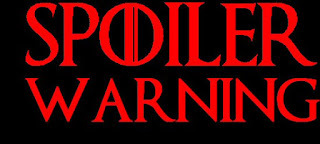 Yet the season left many vocal viewers bitterly disappointed, with many citing a lack of character development as their primary gripe. I don’t think that the real issue is a lack of character development, though – it’s more a lack of viewer insight into it. Much is made of the finale’s time-jump, but this is only the last of many such jumps spread throughout the season – it’s just that the others were not so obvious. Take the much-maligned fourth episode of the season, “The Last of the Starks”, for instance, which featured several. Few episodes have ever started as well as this one does, and in it the writers do an exceptional job of the progressing the Jaime / Brienne relationship to its obvious conclusion – they even manage to appease Tormund / Brienne ‘shippers into the bargain with some of the series’ funniest-ever scenes. Yet, by the end of this episode, Jaime and Brienne have moved from consummating their relationship, through innumerable weeks of co-habiting, all the way to Jaime leaving her to return to Cersei. Had this storyline been played out in the fourth season or earlier, they would have got together in episode two or three and not separated until the season finale. Here, though, we miss everything but the bookends. If Martin ever publishes A Dream of Spring, no doubt he’ll treat us to many immersive Jaime and Brienne chapters focusing on the minutiae of their life together in Winterfell and, in Jaime’s case, the constant pull of Cersei - a pull made irresistible once he learns of Dany’s impending attack on King’s Landing. The story is perfect, and the execution is sublime - but all the show offers us are snapshots of it. Consequently, Jaime’s departure at the end of the episode feels abrupt, perhaps even against the grain, when really it’s anything but if you take a larger view.
Yet the season left many vocal viewers bitterly disappointed, with many citing a lack of character development as their primary gripe. I don’t think that the real issue is a lack of character development, though – it’s more a lack of viewer insight into it. Much is made of the finale’s time-jump, but this is only the last of many such jumps spread throughout the season – it’s just that the others were not so obvious. Take the much-maligned fourth episode of the season, “The Last of the Starks”, for instance, which featured several. Few episodes have ever started as well as this one does, and in it the writers do an exceptional job of the progressing the Jaime / Brienne relationship to its obvious conclusion – they even manage to appease Tormund / Brienne ‘shippers into the bargain with some of the series’ funniest-ever scenes. Yet, by the end of this episode, Jaime and Brienne have moved from consummating their relationship, through innumerable weeks of co-habiting, all the way to Jaime leaving her to return to Cersei. Had this storyline been played out in the fourth season or earlier, they would have got together in episode two or three and not separated until the season finale. Here, though, we miss everything but the bookends. If Martin ever publishes A Dream of Spring, no doubt he’ll treat us to many immersive Jaime and Brienne chapters focusing on the minutiae of their life together in Winterfell and, in Jaime’s case, the constant pull of Cersei - a pull made irresistible once he learns of Dany’s impending attack on King’s Landing. The story is perfect, and the execution is sublime - but all the show offers us are snapshots of it. Consequently, Jaime’s departure at the end of the episode feels abrupt, perhaps even against the grain, when really it’s anything but if you take a larger view. 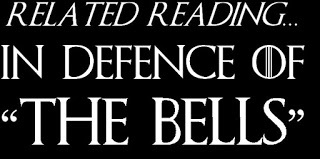 Jaime and Brienne’s relationship is perhaps the most extreme instance of the season’s narrative density, but it is by no means the most keenly felt. Even the central story of Dany’s increasingly tyrannical behaviour the closer she gets to the corrupting influence of the Iron Throne is addressed only in disjointed fragments, placing the onus on the viewer to join the dots in much the same way that Emilia Clarke reportedly had to keep a Daenerys diary to be able to understand the character’s trajectory so that she might portray it as astoundingly as she does. Even in the explainer culture of 2019, this is asking a lot of an audience, particularly when many watching don’t want to make sense of “The Bells” because they are so opposed to their beloved heroine’s actions. Had Game of Thrones done what I hope A Dream of Spring will, and allowed us intimate insight into Dany’s thoughts and feelings as she felt the pull of the throne with her friends and dragons’ bodies mounting around her, I think that their reaction would have been very different indeed.
Jaime and Brienne’s relationship is perhaps the most extreme instance of the season’s narrative density, but it is by no means the most keenly felt. Even the central story of Dany’s increasingly tyrannical behaviour the closer she gets to the corrupting influence of the Iron Throne is addressed only in disjointed fragments, placing the onus on the viewer to join the dots in much the same way that Emilia Clarke reportedly had to keep a Daenerys diary to be able to understand the character’s trajectory so that she might portray it as astoundingly as she does. Even in the explainer culture of 2019, this is asking a lot of an audience, particularly when many watching don’t want to make sense of “The Bells” because they are so opposed to their beloved heroine’s actions. Had Game of Thrones done what I hope A Dream of Spring will, and allowed us intimate insight into Dany’s thoughts and feelings as she felt the pull of the throne with her friends and dragons’ bodies mounting around her, I think that their reaction would have been very different indeed. I do have some of my own issues with season, though these are relatively minor in comparison to those generally seized upon. Most of these were things that I thought ought to have played a part in the endgame; things that I can’t conceive Martin intends to leave out of his books. Arya doesn’t wear a single face all season, for instance, meaning that the only payoff for her becoming a fully-fledged Faceless Man was her murder of the Freys at the start of last season – something that will surely fall to Lady Stoneheart in print. Worse, the direwolves, introduced in the series’ first episode and clearly set up to play a major part in the resolution of the series, are represented only by Ghost who ultimately contributes nothing more than an ear to the defence of the realm. My biggest gripe, though, has to be with Bron and that damned crossbow. You don’t give a mercenary a weapon like that at the start of the season and not have him fire it by the season’s end. Don’t get me wrong, I would have hated it had he actually killed one of the Lannisters – even Cersei – which only goes to show how ill-conceived the whole angle was. It was clearly crowbarred in simply to give a popular character something to do ahead of his appointment as master of coin and lord of High Garden - two unlikely things that I want to hate, logically, but love all the same. Damn you, Jerome Flynn.
Other instinctive gripes I’ve worked through. I was equally thrilled and vindicated when Arya slew the Night King as Ramijn Djawadi’s score reached its eight-season zenith, but part of me still wanted some context to the war that we’d just witnessed; an explanation for the return of the dead and the coming of winter. I wanted to know more about the apparently victorious R’hllor; I wanted a window into the magic of Westeros, a demystification of the lore. But then a single word popped into my head, and my grievance promptly evaporated: midichlorians.
My main complaint with “The Iron Throne”, the series finale, is with its prosaic title. Martin’s own “A Dream of Spring”, or, better still, his abandoned original title, “A Time for Wolves”, would have been infinitely preferable. “The Iron Throne” is, at least, an accurate billing though as the tale boils right down to the pointy chair at centre of the saga and the damage wrought by its corrupting power. Jon and Dany’s final scene together couldn’t be more perfect for me. The falling ash might be a retcon of the snow Dany saw fall in her second-season vision foreshadowing this very moment, but it doesn’t matter – you can still feel the circle closing like a noose around her tragic neck. Kit Harington and Emilia Clarke almost have me in tears with their performances every time I watch; Drogon actually does as he nuzzles the dead body of his mother. Almost as moving is his surprisingly discriminate torching of the throne room and melting of the throne itself. It’s a thing of physical and literal beauty which proves beyond that dragons really are as intelligent as men.
The latter half of the finale had the more challenging job of putting the “sweet” in “bittersweet” while also resolving every lingering plot thread – which is to say, most of them. Unfortunately the scene in the Dragon Pit stands up to no scrutiny whatsoever – whilst I have no doubt Martin has always planned to give Bran the crown (go back and rewatch “Winter is Coming” – Game of Thrones begins and ends with him), and for much the same reasons as those posited by Tyrion, I can’t believe that he’d end up there as the result of a prisoner’s suggestion. On TV, Bran’s ascension also grates as it’s because he has “the best story”, when in fact, his story has been so relentlessly dull throughout the entire show that his character was even written out for an entire season a few years ago when the writers ran into a brick wall with him. This isn’t a fault of the character, or even the performance of Isaac Hempstead-Wright, who in fact comes into his own in these last six episodes, but rather the show’s lacklustre attempt to render a character whose real domain is not the world of men but an ethereal world of visions and omens.
“I thought I was wise, but I wasn’t.”
Similarly, the succession of the North under Queen Sansa is a fitting end to both her personal story and that of the larger kingdom, but it’s dealt with as an afterthought and met with no resistance from anyone. None. Surely the new prince of Dorne would request the same liberty for his own kingdom? Or the fiercely independent Iron Islanders? And what about Northern remainers? Are we expected to believe that the Northerners are like those of us in Britain where “every man, woman and child voted to leave” (according to Little Brexit anyway...)? If it wasn’t for the comic relief of Edmure’s pomposity and Sam’s naivety (his nervous proposal to have a people’s vote is the scene’s highlight), not to mention Peter Dinklage making a rousing speech in the most improbable of situations, the scene might not have worked at all. As it is, though, it gets the job done quickly and efficiently – sentiments that apply to well over half the season.
The concluding scene in the council chamber is fun, whilst still managing to convey Martin’s obsession with the practicalities of ruling. This is the guy who read The Lord of the Rings and loved it, but then found himself questioning Aragorn’s post-war plans for taxation and his policy towards the surviving orcs. “The Iron Throne” might not delve heavily into the minutiae of public office, but it does at least hint at the municipal challenges awaiting our council of fan favourites and their good king, and does so with its tongue heavily planted it its cheek. Closing the last discussion in the series with an argument over public spending – and an anecdote about a goat in a brothel – is something that Martin will have to work hard to top.
The inevitable montage that closes the show is rousing, beautiful and serves our surviving wolves well. Jon had to go North, just as Sansa had to become a queen – their stories couldn’t really have ended any other way. A nice and unexpected touch with Jon’s farewell, though, is its open-endedness – will he take the black again, or does he plan to just head North with the Free Folk? Or can he reconcile the two? Either way, it feels right. Arya’s triumphant departure is probably more satisfying still as she sails boldly west of Westeros, for the first time in a long time her eyes of adventure instead of vengeance. Perhaps my favourite moment, though, is Brienne sitting down to write up the exploits of Jaime Lannister in the White Book – it’s the most moving end to an arc in the whole damned show.
 Click image to enlarge
Click image to enlargeThe steelbook itself is presented in a style largely in keeping with its seven predecessors’, despite the addition of the three 4K UHD discs here on top of the three Blu-rays. Its artwork is gorgeous, evoking the iconic map traversed by the series’ much celebrated title sequence, only rendered in a neutered near-monochrome palette that’s tastefully accented with browns and golds. The set even includes a magnetic sigil that nestles perfectly over its corresponding image on the front, which will no doubt please those who’ve collected all eight across the series. Once my steelbook has been shelved, though, my magnet will probably end up on the fridge alongside Heisenberg and the other “collectable” Blu-ray magnets that I’ve accumulated over the years.
 Click image to enlarge The steelbook’s outer packaging is surprisingly well-built, vac-formed from plastic rather than printed on cheap card, and thus offering both the steelbook and its (as packaged, separated) sigil adequate protection in transit while also making mint-condition resale a simple task for the more mercenary of purchasers. The steelbook’s interior is somewhat less inspiring, as the welcome choice to retain the standard Blu-ray-steelbook dimensions has resulted in a layout in which we have two spindles to stack six discs. It’s the least worst option, admittedly, given that the alternatives would involve either enlarging the steelbook or, worse, inserting a couple of fragile amaray trays, but it’s still almost certain to attract a flood of complaints. However, as packaged, the three Blu-rays fill up one spindle and the three 4K UHD discs the other; it’s worth considering that it makes managing the discs much easier if you just put discs one and two of your preferred format (which together house five of the season’s six episodes) on top of each spindle, with the corresponding disc three underneath one of them.
Click image to enlarge The steelbook’s outer packaging is surprisingly well-built, vac-formed from plastic rather than printed on cheap card, and thus offering both the steelbook and its (as packaged, separated) sigil adequate protection in transit while also making mint-condition resale a simple task for the more mercenary of purchasers. The steelbook’s interior is somewhat less inspiring, as the welcome choice to retain the standard Blu-ray-steelbook dimensions has resulted in a layout in which we have two spindles to stack six discs. It’s the least worst option, admittedly, given that the alternatives would involve either enlarging the steelbook or, worse, inserting a couple of fragile amaray trays, but it’s still almost certain to attract a flood of complaints. However, as packaged, the three Blu-rays fill up one spindle and the three 4K UHD discs the other; it’s worth considering that it makes managing the discs much easier if you just put discs one and two of your preferred format (which together house five of the season’s six episodes) on top of each spindle, with the corresponding disc three underneath one of them. Stunning as it is, the main reason that I was looking forward to this release wasn’t for its packaging. I’ve been desperate to revisit “The Long Night”, an episode slammed by many for its cinematography, only this time with the benefit of Dolby Vision HDR. In the culmination of the series’ war against the dead, Sapochnik tries to take realism to the nth degree; certain scenes appear to only be lit by their natural elements, typically fire. This was not conveyed well by streaming services, to say the least – on Apple TV’s NOW TV app in the UK, it was incredibly difficult to see what was going on. Even accounting for the occasional drop in image quality when my Internet connection waned (something that, interestingly, never seems to happen with Netflix or BBC iPlayer apps on the same device), the image was either too dark to make sense of, or, if I turned up my TV’s backlight to full, washed out and grey. Fortunately, this UHD disc conveys something much closer to what I imagine Sapochnik intended. Whilst the upscaled image on the 4K UHD disc does appear sharper than on its Blu-ray counterpart (probably attributable more to its higher bit rate than its artificially greater resolution), what leaps out about the presentation is its dynamic colour range. Now, fire burns bright. Black is much closer to black. The director’s bold artistic choice is finally done justice, and whilst “The Long Night” is still abounding with the show-typical mêlée madness that made even daytime battles like “The Battle of the Bastards” hard to follow, the presentation is on a par with other darkly graded 4K UHD releases such as Solo: A Star Wars Story. At last, “The Long Night” is truly the thrilling, nail-biting triumph that it was always intended to be - its darkness speaks to its tone, and its writing and direction is clever enough to create a battle-authentic sense of mayhem while still making sure than any moments that matter are clearly telegraphed.
However, though it enhances enjoyment of 95% of the season’s sound and visuals, the 4K UHD presentation also shines a light on the season’s shortcomings – most notably its overuse of green screen. It’s infuriating to have such a luxuriant finish marred by cost-cutting, spoiler-protecting nonsense like using CSO to show Pilou Asbæk on the deck of the Silence. Season 8 contains some of the most beautiful effects shot that I’ve ever seen – Drogon and Rhaegal hovering above the clouds in winter moonlight, for instance – and to see these juxtaposed with shots scarcely worthy of 1970s Doctor Who is a crime. Fortunately the same cannot be said of the immersive 7.1 Dolby Atmos soundtrack, which seems to have been precision engineered to get as much out of the format as is possible on a TV budget. “The Long Night” and “The Bells” are as immersive as any action movie that you’d hear at the cinema, and though the season’s quieter episodes don’t often make use of the additional Atmos channels, they still deliver a vast and vibrant soundscape. Better still, audiophiles yet to make the leap to 4K needn’t miss out on the aural excellence as the Blu-rays discs also contain the Atmos soundtracks (though, as on the 4K UHD discs, they aren’t the default audio track).
The exclusive bonus material on offer is expectedly disappointing, offering only narrow insight into two key episodes. There is no series (or even season) retrospective, precious little said about how much future book knowledge the showrunners had been privy to when they penned this final season (surely it can’t have been limited to just Bran’s fate...?), and nothing at all that addresses any of the questions raised in this review, such as why the showrunners were in such a hurry to finish the show. Instead, we are offered just two half-hour features that add little to the conversation: When Winter Falls is an unabashed puff piece, albeit a well-deserved one, that celebrates the incredible work that went into filming the Battle of Winterfell depicted in “The Long Night”.
Despite being similarly restricted in its scope, “Duty is the Death of Love” is slightly more enjoyable. Benefitting from its treading of new ground (for some reason, “The Iron Throne” was not given the same Inside the Episode and Game Revealed treatment as the rest of the season’s episodes), the cast and showrunners finally lift the veil of the making of the series’ long-awaited and insanely divisive finale. The cast discuss the culmination of their characters’ respective arcs while the production team share the secrets behind such matters as the melting of the throne, or the groundbreaking use of virtual reality to aid practical set design. The commentaries on offer are more of a mixed bag, ranging from the raw and raucous (the impersonations continue apace...) to the clean and clinical, but overall they offer a more rounded, less sanitised look at the making of the final run.
“A realm without people is scenery.”
The set also includes five deleted scenes, the longest of which barely clocks in at two minutes (including the lengthy, contextual padding to either side), and none of which would have made much of a difference to anybody had they made the air. Even Grey Worm’s exit and Missandei’s subsequent “headache” at the feast would have added precious little to their coming tragedy given the attention already afforded to their characters. The six Histories & Lore segments are much more welcome, though. Whilst they revisit certain topics broached in earlier seasons’ editions, it’s from very different vantage points this time around, and with a level of vivid colour that sets them apart from most previous entries in the series - the deep purples and turquoises of the Greyjoy Rebellion are particular striking. Having thoroughly enjoyed Fire & Blood earlier this year, I particularly relished the five-minute instalment on Maegor the Cruel, but “The Defiance of Duskendale” is more interesting still as it concerns a period much closer to the start of the series that Martin’s Targaryen history has yet to reach - one that draws a fascinating parallel between the “mad” Aerys II and his daughter.
Of course, the set’s flagship bonus feature is not exclusive to it – I watched it on NOW TV back in late May. Directed by Jeanie Finlay, the 113-minute Last Watch is really a film in its own right. Unlike many documentaries of the same type, it takes a fascinating look at production from the ground up – the showrunners are dim and distant figures here; the stars of this one are the people on the ground. Production managers. Extras. Security guards. How well it stands up to repeat viewings I can’t say, but two watches in and still holds up incredibly well. I’d challenge anyone to watch this and then in good conscience lobby for a Season 8 remake. These exceptional people practically killed themselves to make this phenomenal show.
Game of Thrones has always been a series that requires its viewers to do more than just watch, and this is never more true than in its final six episodes. It makes you do your homework. You have to be prepared to join the dots. If you do, though, the rewards are immense. As I thoroughly enjoyed it each week on NOW TV, I felt the same rage burn that I did when Star Wars fans relentlessly trolled Rian Johnson following the release of Star Wars: The Last Jedi . There we were, being gifted with this epic, spectacular thing, and all people wanted to do was take to the Internet to spew their bile all over it. Forty-odd quid might seem a lot to pay for lone season of a TV series, but when you consider than you’re getting six movies – seven, if you count The Last Watch – in a level of quality that we couldn’t have conceived of a decade ago, it starts to look at lot like a bargain.

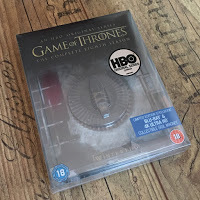
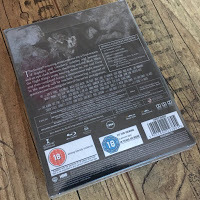
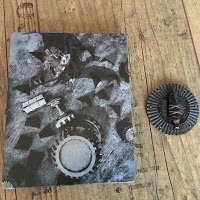
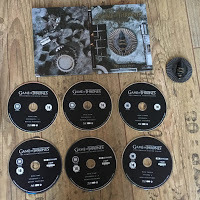
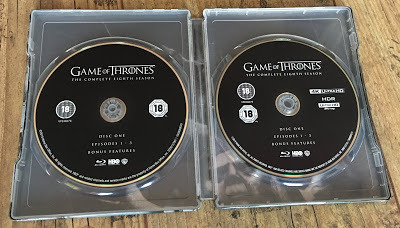 Game of Thrones: The Complete Eighth Season 4K Ultra-HD / Blu-ray steelbook is available now, with today’s cheapest retailer being Zavvi, who have it listed for £40.49 plus £1.99 delivery when using the discount code STEELBOOK.
Game of Thrones: The Complete Eighth Season 4K Ultra-HD / Blu-ray steelbook is available now, with today’s cheapest retailer being Zavvi, who have it listed for £40.49 plus £1.99 delivery when using the discount code STEELBOOK.
Published on December 07, 2019 12:35
December 5, 2019
TV Review | The Orville created by Seth MacFarlane

Star Trek ’s all-conquering return to television all but quashed any interest that I might have once had in watching Family Guy creator Seth MacFarlane’s unexpected foray into the genre. Seemingly destined to be either a brazenly derivative substitute or a weightless pastiche, I really didn’t think that The Orville would be able to win me over. A short-lived £4.99 price tag on its first season saw me decide to at least give it a chance.
With Jon Favreau (Iron Man, The Lion King, The Mandalorian) at the helm of the series’ pilot, The Orville’s first surprise is its cinematic sheen. The ship itself is slick and intricately detailed, and whilst instantly evoking the sense of a Federation starship (Voyager in particular), it manages to distinguish itself through an imaginative rear end - its innovative nacelle arrangement makes it look like the product of a union between spaceship and squid. Exuding the same sense of expense while eschewing any modern sense of style, the whole show proves to be a dazzling and colourful feast for the eyes; an apparently conscious melding of Star Trek and Star Trek: The Next Generation that at times feels like a flip of the bird to the ubiquitously dark Star Trek: Discovery and its imminent sister series.
More astonishing still is the show’s substance. Growing organically out of its comedy is an oxymoronic, down-to-Earth ambience that, due in part to basic decency, its genre rivals just can’t match. There’s not a fanciful matter transporter in sight, yet the series leaves viewers with no question marks whatsoever over the ship’s plumbing. The Orville has toilets, as we establish very early on as Gordon does his best to hold in a piss when accosted by Kelly, the new first officer (and the captain’s ex-wife), just outside the bogs. Such awkward mundanities conjure a very real sense of the ship being an authentic workplace, rather than a container for all of humanity’s distilled aspirations and virtues.
From top to bottom, the Orville’s crew are a study in plausible imperfection. Captain Mercer and Kelly are divorced, and it’s awkward. The helmsmen are pissheads, and don’t seem to really give a shit about anything. The security chief has the strength of ten men, which just about everyone that she dates seems to feel threatened by, much to her frustration. Even the ship’s resident android (brilliantly underplayed by newcomer Mark Jackson), a student of humanity in the mould of his Star Trek antecedent, has a convincingly disturbing edge to him - in one especially memorable episode he amputates a colleague’s leg as he sleeps in an attempt to master practical joking, such is his ignorance of that imperceptible line between an artful jape and grievous bodily harm which most humans have mastered by toddlerhood.
 Yet The Orville’s humour belies a level of narrative sophistication which sometimes eclipses the franchise that it so overtly seeks to emulate. “About a Girl” is built on the hysterical incongruity that Bortus, the ship’s Worf, comes from an almost exclusively male, egg-laying species. Imagine Worf sat in his quarters naked atop a seat-sized egg, griping about his husband’s low mood and disinterest in sex, and you’ll get a sense of the flavour. Behind such knee-jerk laughter, though, is a challenging and contemporary ethical tale as ambitious as any ever broached in Star Trek. If it’s morally acceptable for a human parent to circumcise a child, then why can’t a Moclan “correct” his child’s gender if she hatches female? It’s a Roddenberry-esque ethical quandary, and one that’s bang on the zeitgeist to boot, yet it never really feels like it as it’s couched in exquisite eggshell comedy. Only afterwards do you realise that MacFarlane has snuck in and Trekked you.
Yet The Orville’s humour belies a level of narrative sophistication which sometimes eclipses the franchise that it so overtly seeks to emulate. “About a Girl” is built on the hysterical incongruity that Bortus, the ship’s Worf, comes from an almost exclusively male, egg-laying species. Imagine Worf sat in his quarters naked atop a seat-sized egg, griping about his husband’s low mood and disinterest in sex, and you’ll get a sense of the flavour. Behind such knee-jerk laughter, though, is a challenging and contemporary ethical tale as ambitious as any ever broached in Star Trek. If it’s morally acceptable for a human parent to circumcise a child, then why can’t a Moclan “correct” his child’s gender if she hatches female? It’s a Roddenberry-esque ethical quandary, and one that’s bang on the zeitgeist to boot, yet it never really feels like it as it’s couched in exquisite eggshell comedy. Only afterwards do you realise that MacFarlane has snuck in and Trekked you.Just as provocative is first-season highlight “Majority Rule”, in which the Orville visits a world subject to “total democracy”. There is no legal system, no constitution, no rights to speak of – it’s a populist nightmare governed entirely by its citizens’ aggregated like and dislike votes. With its apology tours and downvote discrimination, MacFarlane’s script extrudes an entire culture from the very worst aspects of our social media, offering us a sobering look at our potential near future while laughing our heads off at Lieutenant LaMarr dry humping a statue.

As with any ensemble piece, The Orville is only as good as its regular cast – which is fortunate, as MacFarlane’s bridge crew each deliver one polished performance after another. This is especially noteworthy as a typical Orville script requires not only great comic timing, but often emotionally challenging character moments and high-stakes drama. MacFarlane himself is marvellous as Ed Mercer, the antithesis of almost every Starfleet captain ever seen on screen. He’s likeable, competent, and yet beautifully damaged – more the Miles O’Brien everyman than a Jean-Luc Picard or Jim Kirk history-maker. His ex-wife Kelly, played by Adrianne Palicki (Marvel’s Agents of SHIELD), is altogether stronger, but finds herself in the uncomfortable position of serving a captain that she’s cheated on – and on a ship crewed by many of his best mates, such as Scott Grimes’ series-stealing Lieutenant Gordon Malloy.
And despite all external appearances and initial impressions, Peter Macon’s Bortus proves to be one of the show’s most rounded and complex characters. The Orville’s second officer may be a great hulking bruiser of an alien who makes Worf seem garrulous, but he’s also a knackered parent and sex-starved husband who’s trying to juggle a demanding job and busy private life. Just as captivating is Halston Sage’s super-powered security chief, Lieutenant Alara Kitan, whose remarkable strength is dwarfed only by her rampant insecurity. Even John LaMarr (J Lee), whose initial role seems to be limited to giving Gordon a Bro to hang out with, develops into one of the show’s more intriguing and entertaining individuals as we discover that he’s been downplaying his intellect because, well, he’s intelligent enough to realise that, more so than ever in a post-currency culture, only fools and horses work. He’s more into boobs and beer than respect and responsibility.
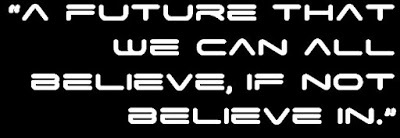 If you need further evidence of the show’s credentials, then just take a look at its first-season’s supporting stars and production team. There’s a Trek family feel with the likes of Penny Johnson Jerald (
Deep Space Nine
’s Kassidy Yates-Sisko) and Robert Picardo (
Voyager
’s EMH) frequently popping up on screen, The Next Generation’s Jonathan Frakes and Voyager’s Robert Duncan McNeill behind the camera calling the shots, and even First Contact co-writer and Enterprise co-creator Brannon Braga contributing scripts and direction . There are some mainstream superstars too: Rob Lowe’s (Wayne’s World) loveable yet marriage-wrecking Darulio makes “Cupid’s Dagger” a comic highlight of the season, while Victor Garber (
DC’s Legends of Tomorrow
) gives the Union’s top brass some wonderfully lifelike cuts and dents, and Charlize Theron’s apparently marooned miner lends the time-travelling shenanigans of “Pria” a deliciously seductive quality. Even Liam Neeson (
Star Wars: Episode I - The Phantom Menace
) has a walk on.
If you need further evidence of the show’s credentials, then just take a look at its first-season’s supporting stars and production team. There’s a Trek family feel with the likes of Penny Johnson Jerald (
Deep Space Nine
’s Kassidy Yates-Sisko) and Robert Picardo (
Voyager
’s EMH) frequently popping up on screen, The Next Generation’s Jonathan Frakes and Voyager’s Robert Duncan McNeill behind the camera calling the shots, and even First Contact co-writer and Enterprise co-creator Brannon Braga contributing scripts and direction . There are some mainstream superstars too: Rob Lowe’s (Wayne’s World) loveable yet marriage-wrecking Darulio makes “Cupid’s Dagger” a comic highlight of the season, while Victor Garber (
DC’s Legends of Tomorrow
) gives the Union’s top brass some wonderfully lifelike cuts and dents, and Charlize Theron’s apparently marooned miner lends the time-travelling shenanigans of “Pria” a deliciously seductive quality. Even Liam Neeson (
Star Wars: Episode I - The Phantom Menace
) has a walk on.Far from being what I had expected, The Orville shows real people dealing with real issues with real heart and real humour. They aren’t holier-than-thou moral crusaders with an idealistic calling to explore all of known space, they’re just your mates from work or down the pub. It is without a doubt the most grounded space opera that I’ve ever watched, but it can still claim to be one of the funniest, too. A far cry from the crazy high-concept, low-brow humour of Red Dwarf or the barbed philosophical elegance of The Hitch-Hiker’s Guide to Galaxy, The Orville is proudly its own thing – a future that we can all believe, if not believe in.
The Orville’s first season is available to download from iTunes in 1080p HD for £14.99 (sorry, the £4.99 deal ended on 29th January!). Season 2, which is next on my hit list, is the same price, and there is also a two-season box set for £24.99. There is no Blu-ray or 4K release in the UK.
Published on December 05, 2019 23:25
October 21, 2019
#HatTip | Warren Carratt on X-Men #1
Here’s a potentially alluring catch by my buddy Warren Carratt, whose careful reading of the new X-Men #1 has given CBR.com something to run with:
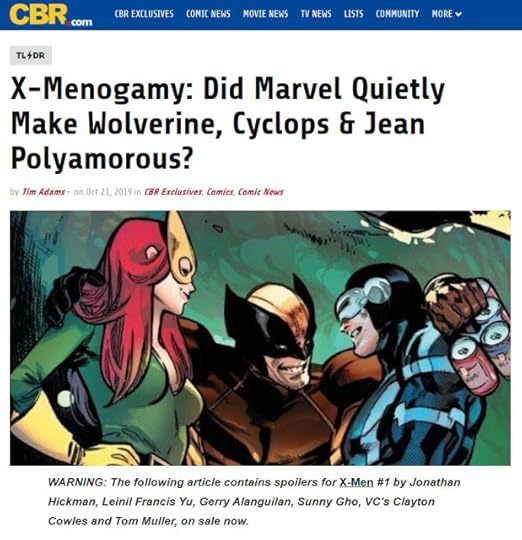 Only Warren could have spotted a love triangle returning “in a new shape”.
Only Warren could have spotted a love triangle returning “in a new shape”.
Brilliant.
X-Men #1 is available now. The X-Men find themselves in a whole new world of possibility and things have never been better! Jonathan Hickman and superstar artist Leinil Yu reveal the saga of Cyclops and his hand-picked squad of mutant powerhouses!
 Only Warren could have spotted a love triangle returning “in a new shape”.
Only Warren could have spotted a love triangle returning “in a new shape”.Brilliant.
X-Men #1 is available now. The X-Men find themselves in a whole new world of possibility and things have never been better! Jonathan Hickman and superstar artist Leinil Yu reveal the saga of Cyclops and his hand-picked squad of mutant powerhouses!
Published on October 21, 2019 14:59
September 21, 2019
Legends of the Dark Knight #5 | Batman directed by Tim Burton
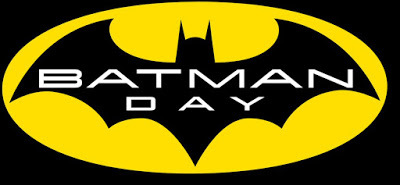 These days, our years are littered with as many event movies as they are bank holidays. Scarcely a season passes without a new chapter in the
Star Wars
saga or the MCU offering the media – and the rest of us - a brief respite from the real-life sagas of Brexit and Trump. But, in the dying days of the 1980s, Tim Burton’s Batman was the first film to really make waves before so much as a single frame of footage had been released to the world. The Wall Street Journal gave Michael Keaton’s casting a front-page lambasting. Viewers packed cinemas with the express purpose of watching the Batman trailer, then left to let the main feature play to an empty house. Propelled by the mainstream praise lavished on Frank Miller’s epoch-making reimagining of the Dark Knight, audiences were hungry for a cinematic take on the Caped Crusader that reflected the tone of such works. Rampant doubts and fears only seemed to fuel the escalating publicity. Batman was going to be the biggest film ever - and, in most respects, it really was.
These days, our years are littered with as many event movies as they are bank holidays. Scarcely a season passes without a new chapter in the
Star Wars
saga or the MCU offering the media – and the rest of us - a brief respite from the real-life sagas of Brexit and Trump. But, in the dying days of the 1980s, Tim Burton’s Batman was the first film to really make waves before so much as a single frame of footage had been released to the world. The Wall Street Journal gave Michael Keaton’s casting a front-page lambasting. Viewers packed cinemas with the express purpose of watching the Batman trailer, then left to let the main feature play to an empty house. Propelled by the mainstream praise lavished on Frank Miller’s epoch-making reimagining of the Dark Knight, audiences were hungry for a cinematic take on the Caped Crusader that reflected the tone of such works. Rampant doubts and fears only seemed to fuel the escalating publicity. Batman was going to be the biggest film ever - and, in most respects, it really was.
It’s often said that Tim Burton’s Batman was heavily inspired by Miller’s Year One, but in truth the movie’s long genesis pre-dates Batman’s post-Crisis reboot by the better part of a decade. Burton’s movie may certainly be a clear steer towards the darkness of the fan-favourites of the late 1980s, but it’s a heightened, romantic sort of darkness – all mist, melody and melodrama. Even Sam Hamm and Warren Skaaren’s script is unique, taking great liberties with character and canon in order to tell a complete and satisfying story within the film’s runtime. Jim Gordon, the beating heart of Year One, is little more than an slow-on-the-uptake extra in the film, and the police force at his command is as bent as the force that the young lieutenant finds in print. Bruce Wayne isn’t a recent returnee to Gotham here, but a well-established pillar of the community – and, crucially, a much more conflicted one that the purposeful twenty-something envisaged by Miller. If anything, Tim Burton’s film is a noirish love letter to the earliest days of Batman in the old Bob Kane comic books – a lone detective behind the scenes, a silent spectre in the dark.
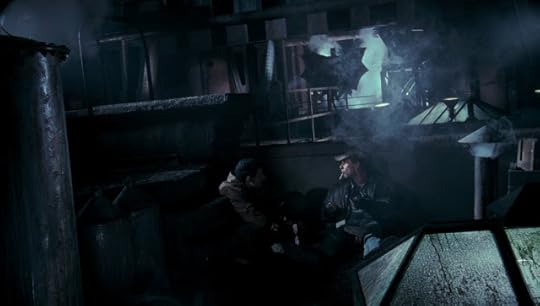
 As a youngster, I never questioned the suitability of Michael Keaton for the role of Batman – to me he just was Batman - that was that. Looking back on the film now, though, it’s easy to see why his casting provoked the furore that it did – standing at 5’ 7” and looking like he weighed 150lb soaking wet, at a glance he seemed to – quite literally – lack the weight required for the role. However, save for a few sequences that stretch the limits disbelief just a little too far (the diminutive Batman effortlessly holding a large mugger over the edge of the building, for instance), Keaton utterly convinces beneath the cowl. His eyes blaze out through the mask with a purpose yet to be matched by another actor, and Burton shoots the film’s action sequences in such a fashion as to render the actor’s stature all but immaterial.
As a youngster, I never questioned the suitability of Michael Keaton for the role of Batman – to me he just was Batman - that was that. Looking back on the film now, though, it’s easy to see why his casting provoked the furore that it did – standing at 5’ 7” and looking like he weighed 150lb soaking wet, at a glance he seemed to – quite literally – lack the weight required for the role. However, save for a few sequences that stretch the limits disbelief just a little too far (the diminutive Batman effortlessly holding a large mugger over the edge of the building, for instance), Keaton utterly convinces beneath the cowl. His eyes blaze out through the mask with a purpose yet to be matched by another actor, and Burton shoots the film’s action sequences in such a fashion as to render the actor’s stature all but immaterial. “Nice outfit.”
“Nice outfit.”Where Keaton really excels though is in his performance of Bruce Wayne. Often treated as a mask worn by Batman, as opposed to vice-versa, this movie dispels any pre-existing ideas about Batman and his alter ego, instead creating a plausible amalgam persona that the movie sets out to dramatically tear in half. Hamm and Skaaren’s storyline makes a tragic lover out of the pretend playboy, juxtaposing Bruce’s apparent desire for love and a normal life against the nocturnal lure of warring on criminals to satiate the ghost of his slain parents. The figures of Vicki Vale (Kim Basinger) and Jack Napier (Jack Nicholson) embody these two competing lures as Bruce falls head-over-heels for one while Batman fixates on ending the threat posed by the other.
 “Another rooster in the henhouse...”
“Another rooster in the henhouse...”Despite its departure from previously inviolate lore, these opposing pulls on our tragic hero’s soul are heightened by how Hamm and Skaaren’s script builds up the two characters at each end of the rope. Kim Basinger’s Vicki Vale seems to so obviously be the love of Bruce’s life that even Michael Gough’s trusty old Alfred is quite willing to betray his master’s secret to her with scarcely a thought - all because he thinks that it will help to bring them together, which of course it does.
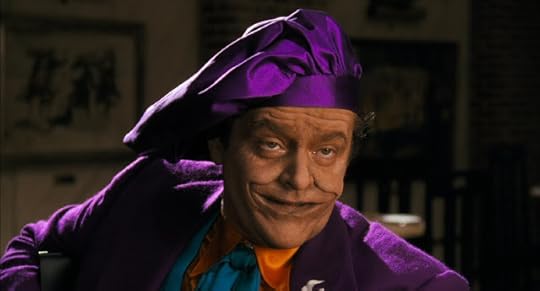 “Do I look like I’m joking?”
“Do I look like I’m joking?”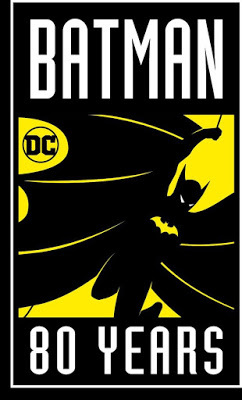 Jack Napier, meanwhile, is unmasked as the man who murdered Bruce’s parents all those years ago. For Batman, this discovery blurs the line between vigilante and avenger as his code takes a backseat to vengeance - a development that’s essentially anathema to the character. It’s utterly wrong, of course, which is why it works so beautifully as played out here. As Batman locks his sights on the Joker and unleashes every bullet and projectile that the Batwing has to offer, it’s a moral victory for the man out to prove that he and the Bat are one and the same; extensions and reflections of each other dancing together in the pale moonlight. “I made you, but you made me first.”
Jack Napier, meanwhile, is unmasked as the man who murdered Bruce’s parents all those years ago. For Batman, this discovery blurs the line between vigilante and avenger as his code takes a backseat to vengeance - a development that’s essentially anathema to the character. It’s utterly wrong, of course, which is why it works so beautifully as played out here. As Batman locks his sights on the Joker and unleashes every bullet and projectile that the Batwing has to offer, it’s a moral victory for the man out to prove that he and the Bat are one and the same; extensions and reflections of each other dancing together in the pale moonlight. “I made you, but you made me first.”Batman would have us believe that Vicki and Jack are Bruce’s ultimate lover and ultimate nemesis and, if you buy into that conceit, then as a self-contained piece of entertainment Burton’s Batman is hard to beat. As soon as we enter the realm of sequels, though, the stakes are inevitably lessened - no love interest could live up to Vicki, and no threat could be as personal or as dangerous as that posed by the Joker. Batman is thus the cinematic equivalent of a perfect one-shot – and, in my view, best enjoyed as such.

Of course, Batman is most famous for Jack Nicholson’s memorable turn as Jack Napier / the Joker, which really raised the bar for all future actors playing the part. As a child, I questioned how the movie could give top billing to its baddie, as opposed to its eponymous hero, but there is no question now that Nicholson is the obvious star of the piece. That’s no slight on Keaton – it’s just a basic truth ingrained in the very fabric of the film. Batman chronicles the Joker’s origin, rise and – quite literally – fall, whereas the titular Caped Crusader begins and ends the movie as an established creature of the night. The Joker is front and centre here; Batman is the foil. This inversion of what would become the typical superhero movie format serves the picture well, though, building up the mystique of the Dark Knight while at the same time indulging the audience with just as many scenes from the Joker’s perspective as from Batman’s or Vicki’s. The torrent of quotable dialogue alone is worth the price of admission.
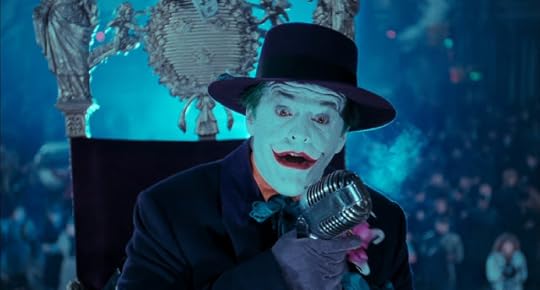 “Where does he get those wonderful toys…?”
“Where does he get those wonderful toys…?”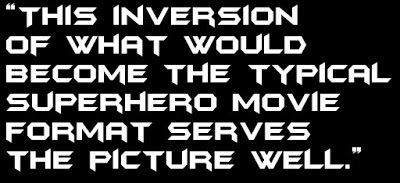 Yet whilst Nicholson’s performance is nothing short of phenomenal, as much credit goes to the production team for crafting the first plausible take on Batman’s greatest enemy to be shown on screen. Hamm and Skaaren spend a significant amount of time with the cruel and psychotic Jack Napier before a ricocheting bullet sends him tumbling into the obligatory vat of chemicals, establishing him as a worthy adversary in his own right. Even pre-Joker, Jack’s fierce intelligence and intuition are matched only by his capacity for treachery and cruelty. When the Joker emerges from the waters of Axis Chemicals, his skin bleached white and his smile permanently carved into his features (a particularly lovely touch), he does so with a much savvier and purposeful agenda than most previous iterations.
Yet whilst Nicholson’s performance is nothing short of phenomenal, as much credit goes to the production team for crafting the first plausible take on Batman’s greatest enemy to be shown on screen. Hamm and Skaaren spend a significant amount of time with the cruel and psychotic Jack Napier before a ricocheting bullet sends him tumbling into the obligatory vat of chemicals, establishing him as a worthy adversary in his own right. Even pre-Joker, Jack’s fierce intelligence and intuition are matched only by his capacity for treachery and cruelty. When the Joker emerges from the waters of Axis Chemicals, his skin bleached white and his smile permanently carved into his features (a particularly lovely touch), he does so with a much savvier and purposeful agenda than most previous iterations. 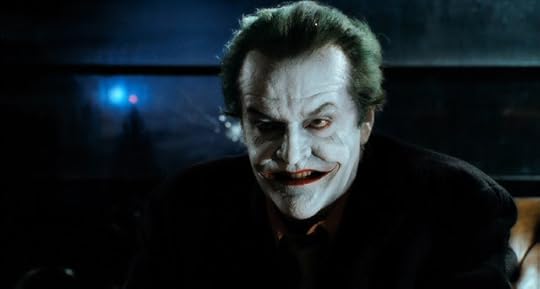 “Wait ’til they get a load of me.”
“Wait ’til they get a load of me.”Indeed, despite the sadistic grin carved into his features, this Joker isn’t just in it for the laughs. Rather than burn it all down, he wants to take it all over. A few beautiful little moments peppered throughout the film make Jack’s feelings towards Grisham, the mobster running Gotham’s underworld, quite plain. Whilst Jack clearly loathes his boss, he still wants to be him. He wants his woman. He wants his power. He wants to be the one squeezing the shoulders of a disposable lieutenant, telling him that he’s his “main man”, as opposed to being that lieutenant himself. Before Axis Chemicals, though, Jack was seemingly content to just sit back and play cards. Afterwards, there was only one card that he could ever play.
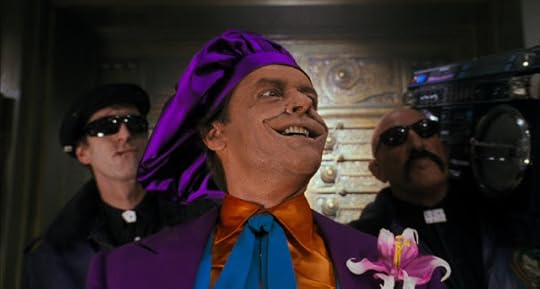 “Let’s broaden our minds. Prince!”
“Let’s broaden our minds. Prince!”A final outstanding aspect of this movie is its zany, high-concept soundtrack. Injected into the gothic splendour of Gotham City is a colourful burst of late-1980s pop courtesy of Prince, who provided Warner Brothers with an entire album’s worth of tie-in material, much of which is used on screen. Joker’s bombastic assault on the art gallery stands out especially as an iconic moment in cinematic history – a bizarre fusion of darkness and colour that seems to encapsulate everything Joker. And woven in amidst the likes of “Partyman” is prolific composer Danny Elfman’s most stirring score, which includes a Batman theme that would prove every bit as enduring as the rest of the movie and finally lay the ghost of “Der, ner, ner, ner, ner, ner, ner, ner…” to rest. It’s so effective and rousing a composition that it would be immortalised by Bruce Timm’s subsequent animated series, with which it would become synonymous, and even memorably reprised in 2017’s Justice League movie.

Twenty years on from the adventures of the Camp Crusader, Tim Burton’s movie presented audiences with a version of Batman that would redefine his mainstream perception for decades to come. It brought us the definitive Batmobile. The definitive theme music. It even turned blue and grey black and yellow. If you’ve seen any of the LEGO Movies, you’ll notice that the LEGO Batman is Michael Keaton’s, right down to the yellow logo on his chest and his insistence that he, “…only work in black.” Even after Chris Nolan’s epic, fan-pleasing trilogy and Zack Snyder’s contentious but popular rendition of an older Dark Knight, the incarnation that continues to resonate in the public consciousness is the one created by this movie. Spock is Star Trek . Tom Baker is Doctor Who . Michael Keaton is Batman. And deservedly so.
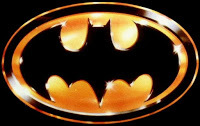
On 16th September a 4K UHD steelbook was released to tie in with Batman’s eightieth anniversary. A thing of quiet beauty, as moody and strong as the movie that it houses, it’s an offering that’s surprisingly - but tastefully - understated. As is often the case, the rear artwork is even more impressive than the more obvious front cover’s as it depicts Batman looking out over the city that he’s committed to protect, instantly conjuring the film’s brooding tone. Inside, the bullet-shaped Batmobile emerges from beneath the set’s two discs, only the movie-poster-style credits marring its slick finish.
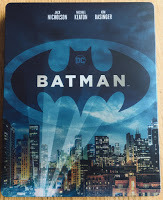
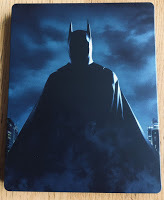 Click to enlarge images. The release includes both the 4K UHD disc and a Blu-ray, with the latter also housing all of the extensive bonus material previously released on DVD back in 2006. Whilst the bonus material hasn’t been upscaled, the version of the movie presented on the Blu-ray appears to have been downscaled from the new 4K transfer – it’s clearly superior to the version of the film that’s already available to buy on Blu-ray.
Click to enlarge images. The release includes both the 4K UHD disc and a Blu-ray, with the latter also housing all of the extensive bonus material previously released on DVD back in 2006. Whilst the bonus material hasn’t been upscaled, the version of the movie presented on the Blu-ray appears to have been downscaled from the new 4K transfer – it’s clearly superior to the version of the film that’s already available to buy on Blu-ray.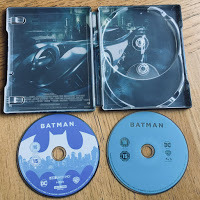
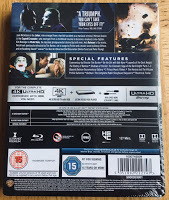 Click to enlarge images. The set’s centrepiece 4K UHD disc is almost as impressive as the Chris Nolan’s movies’, which remain my go-to demo discs. Whilst a twenty-year-old movie couldn’t hope to hold its own against the glorious IMAX sequences in The Dark Knight or The Dark Knight Rises, the overall presentation still comes very close as it almost fills up a 16:9 television’s screen throughout (as opposed to just during IMAX sequences), thus providing a much more consistent, if somewhat less dramatic, experience. Though the resolution is expectedly superb, the obvious selling point here is the HDR, which really lifts to the movie to new heights. Burton’s tale tells of a shadow-lit hunter in pursuit of a colourful criminal, and this release finally delivers his vision of vibrant purples and reds contrasted against every shade of shadow on a ubiquitous, burnt orange canvas. A full-on ATMOS soundtrack is the icing on the cake. All told, this release is a triumph – the perfect birthday gift for an octogenarian crimefighter looking to put his feet up for two hours. I’d highly recommend heading over to Zavvi without delay to get one ordered before the limited run sells out.
Click to enlarge images. The set’s centrepiece 4K UHD disc is almost as impressive as the Chris Nolan’s movies’, which remain my go-to demo discs. Whilst a twenty-year-old movie couldn’t hope to hold its own against the glorious IMAX sequences in The Dark Knight or The Dark Knight Rises, the overall presentation still comes very close as it almost fills up a 16:9 television’s screen throughout (as opposed to just during IMAX sequences), thus providing a much more consistent, if somewhat less dramatic, experience. Though the resolution is expectedly superb, the obvious selling point here is the HDR, which really lifts to the movie to new heights. Burton’s tale tells of a shadow-lit hunter in pursuit of a colourful criminal, and this release finally delivers his vision of vibrant purples and reds contrasted against every shade of shadow on a ubiquitous, burnt orange canvas. A full-on ATMOS soundtrack is the icing on the cake. All told, this release is a triumph – the perfect birthday gift for an octogenarian crimefighter looking to put his feet up for two hours. I’d highly recommend heading over to Zavvi without delay to get one ordered before the limited run sells out.
Published on September 21, 2019 11:25
September 14, 2019
Audiobook Review | Doctor Who: The UNIT Collection by Terrance Dicks & Malcolm Hulke
Despite being a generation too young to be swept up in the Targetmania of the late 1970s, I was fortunate enough to have an older brother and an uncle more than a decade older than me who, between them, handed down a modest library of Target’s
Doctor Who
novelisations encompassing many of the greatest stories from the second and third Doctor’s eras. From the claustrophobic terror of the London Underground to the besieged oil rigs of the North Sea, these clever and challenging little books captured my fledgling imagination with the force of few things before or since. As I had only the assaulting colour of the late John Nathan-Turner era as a reference point for the series on screen, these thin paperbacks’ tattered edges and yellow pages only added to their allure. Their near-monochrome covers and dull accent hues made them feel like a more adult rendition of the TV show that I loved, which I suppose, they were. And along most of their broken spines ran the same name: Terrance Dicks.
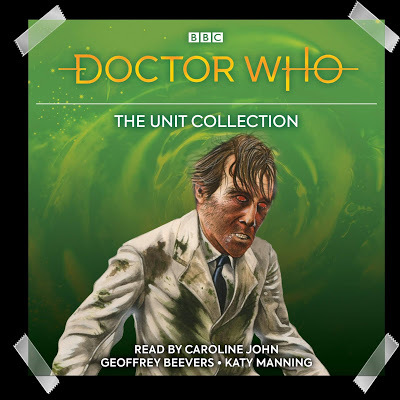 It’s tough to explain to someone who isn’t a Doctor Who nut just how colossal a literary figure Terrance Dicks was. Few under forty will have even recognised his name when glancing at his well-read obituary on the BBC News website, but for the children of the ’70s and ’80s he was the kingpin of child literacy. He may not get the same sort of respect as the phizz-whizzing Roald Dahl or other notable children’s authors of the era, but he was just as responsible for hooking millions of youngsters on reading as they were. Even at nearly forty years old, I’ve still read more Dicks than I have any other author in my life, and in so doing I’ve barely scratched the surface of his prolific output.
It’s tough to explain to someone who isn’t a Doctor Who nut just how colossal a literary figure Terrance Dicks was. Few under forty will have even recognised his name when glancing at his well-read obituary on the BBC News website, but for the children of the ’70s and ’80s he was the kingpin of child literacy. He may not get the same sort of respect as the phizz-whizzing Roald Dahl or other notable children’s authors of the era, but he was just as responsible for hooking millions of youngsters on reading as they were. Even at nearly forty years old, I’ve still read more Dicks than I have any other author in my life, and in so doing I’ve barely scratched the surface of his prolific output.
I’ve recently been enjoying the resurgence of Target-style Doctor Who novelisations with my eldest daughter, the continuing publication of which serve as a testament to the great man. Expanding and embellishing already fantastic stories, these new books continue Dicks’ legacy by making the Whoniverse deeper and richer than it already is. Yet reading Jenny T Colgan’s introduction to Doctor Who and the Christmas Invasion, I was reminded that Dicks didn’t just entertain; he inspired others to write too. Colgan herself is living proof that it wasn’t just little boys with their noses buried in his books for hours on end, dreaming of becoming authors. But ever since Dicks’ passing, enjoying new stories given new life hasn’t felt like enough for me. I’ve felt a need to revisit his golden age, and with time sat on my backside at a premium, but time out on my feet in abundant supply, I decided to dive into BBC Audio’s highly-regarded range of unabridged Target readings, starting with The UNIT Collection download.
Priced at just £9.99, the value offered by this bundle is staggering. Running to nearly twenty-two hours, it includes Caroline John’s fabulous readings of three of the third Doctor’s seventh-season outings along with her husband’s sibilant performance of Doctor Who and the Terror of the Autons and Katy Manning’s lively delivery of The Three Doctors. To purchase these five books on CD would have cost me £100.00 or more, and of course I’d have been faced with the laborious prospect of transferring them onto my iPhone.
Particularly with the more recently recorded stories like Inferno, the production values are comparable to Big Finish’s - these are not just talking books, but vibrant soundscapes populated with engines, explosions and rapid UNIT fire. Only the over-use of each story’s custom musical refrain blights the aural splendour. Better still, each of the narrators truly gives life to the piece, as opposed to just reading it. Caroline John’s range, already evident to listeners of her Companion Chronicles, has to be heard to be believed - from Silurian to Australian, she makes every single character unique. Geoffrey Beevers’ delivery is altogether more contained, but no less interesting for it. It’s mesmerising to hear him play Roger Delgado’s suave Master more in line with his own, calcified iteration. And, of course, Katy Manning needs no soundbite of endorsement from me – she’s a walking one-woman show, as anyone even remotely familiar with her work will attest.

The five adventures on offer are an emblematic offering of not just UNIT adventures, but UNIT according to Dicks. His adaptations of the two Robert Holmes’ Nestene scripts (retitled Doctor Who and the Auton Invasion and Doctor Who and the Terror of the Autons both here and in print) actually improve upon the iconic television serials. He takes the already delightful supporting characters dreamt up by Holmes and expounds upon them and their little worlds, all the while using precision prose to evoke the titular terror. Seeley the poacher and his ever-suspicious spouse, Meg; General Scobie the shy, reluctant leader; the doctor charged with safeguarding an apparently alien patient – a patient his boss is looking for any excuse to slice into; Luigi Rossini, the parsimonious “international showman”, whom Dicks reveals was born Lou Ross and built his little empire on violence and subjugation. These expansions, these digressions, make the stories feel all the more real; all the more relatable. For the children who grew up watching wide-eyed, these books allowed them to enjoy these once ephemeral adventures all over again, cementing rose-tinted memories in witty words and monochrome illustrations.
Even Doctor Who and the Cave Monsters, adapted by Malcolm Hulke from his own scripts, has Dicks’ fingerprints all over it as its most fundamental premise belonged to him. Determined to prove his erstwhile writing partner’s assertion that he had just two options for Earthbound Doctor Who stories (“mad scientist and alien invasion”) wrong, Dicks commissioned Hulke to write a serial about native, sentient life forms that evolved before mankind who are now looking to reclaim their planet.
Hulke’s book fits in beautifully amongst Dicks’ four, despite taking a very different approach to adaptation. Whilst a beautiful and tragic tale, on TV Doctor Who and the Silurians was marred by its undue length and poor realisation – two things that Hulke sets straight in his reimagining along with the monsters’ misnomer of a designation (there’s not a Silurian in sight here - these bad boys are Reptile-Men). Tighter, faster and with much greater emphasis on supporting players, Doctor Who and the Cave Monsters is another example of the adaptation eclipsing the original offering. Its focus on the Reptile-Men’s viewpoint is key in dividing our sympathies and heightening the inexorably tragic feel. Taking us from the height of the Reptile-Men’s empire – something never shown on the telly – to the madness of Barker and the intimate musings of Miss Dawson, who lives in silent terror of people replacing the question, “Why don’t you get married?” with “Why didn’t you ever get married?, Hulke’s novel also boasts the same sort of depth as Dicks’ four, whilst simultaneously addressing just about every complaint ever directed against the original serial that spawned it.
Dicks takes a similar approach with Inferno, a surprisingly late entry in the Target range - particularly when we consider that Dicks’ was heavily involved in the writing of the original serial. Memorable for its forays into a parallel universe, a concept reportedly introduced into Don Houghton’s scripts by Dicks, Dicks reworks the story to cut a hell of a lot of narrative fat as he balances out the story across the two universes. Many a child’s memory will have been cheated by Dicks’ streamlined, action-packed take on what was, let’s face it, a languid if occasionally dazzling serial.
Unfortunately, the digital delivery of this cut-price collection leaves much to be desired. Rather than making five separate audiobooks available for download (as they make separate movies available when purchasing a film bundle), Apple have amalgamated all five stories into one super-dense file. Not only does this take up a lot of space on a device (well over a gigabyte), but the DRM prevents the more obsessive of us from separating and retagging the five audiobooks with story-specific artwork and sort names. This lack of care extends to the division of the download file into nameless tracks rather than chapters ( or even books!), making navigation of the bloated file even more torturous. Worse still, whoever created this massive digital file apparently did so from the physical releases’ masters, as evidenced by their failure to remove all of the jarring “End of disc …” links from the download (such as half-way through tracks 37 and 41). Even the PDF booklet promoted in the listing is conspicuously absent. The need for a digital equivalent to the Video Packaging Review Committee grows by the day – this whole release smacks of being lazily cobbled together to be offered as a cheap lure for new listeners.
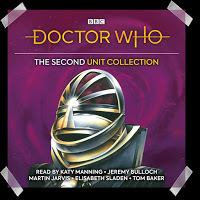 Of course, it has to be said, that lure is effective – thanks in no small part to the late, great Terrance Dicks.
Of course, it has to be said, that lure is effective – thanks in no small part to the late, great Terrance Dicks.
Doctor Who: The UNIT Collection is available to download from Apple Books for the preposterous price of just £9.99, though as I’ve warned it is delivered as a single m4a file and without the digital booklet offered in the description. However, at least the latter fault has been corrected with Doctor Who: The Second UNIT Collection, which I downloaded last night, digital booklet and all. The collection is also available to download from Amazon for £14.08.
Also available:
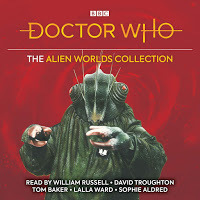
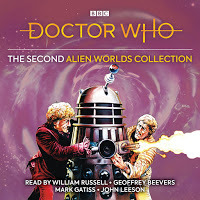
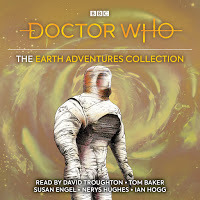
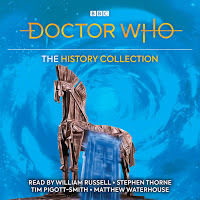
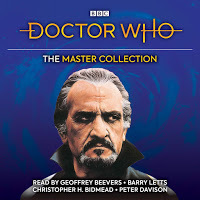
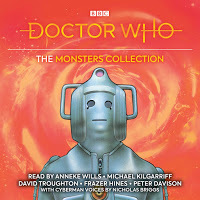
 It’s tough to explain to someone who isn’t a Doctor Who nut just how colossal a literary figure Terrance Dicks was. Few under forty will have even recognised his name when glancing at his well-read obituary on the BBC News website, but for the children of the ’70s and ’80s he was the kingpin of child literacy. He may not get the same sort of respect as the phizz-whizzing Roald Dahl or other notable children’s authors of the era, but he was just as responsible for hooking millions of youngsters on reading as they were. Even at nearly forty years old, I’ve still read more Dicks than I have any other author in my life, and in so doing I’ve barely scratched the surface of his prolific output.
It’s tough to explain to someone who isn’t a Doctor Who nut just how colossal a literary figure Terrance Dicks was. Few under forty will have even recognised his name when glancing at his well-read obituary on the BBC News website, but for the children of the ’70s and ’80s he was the kingpin of child literacy. He may not get the same sort of respect as the phizz-whizzing Roald Dahl or other notable children’s authors of the era, but he was just as responsible for hooking millions of youngsters on reading as they were. Even at nearly forty years old, I’ve still read more Dicks than I have any other author in my life, and in so doing I’ve barely scratched the surface of his prolific output.I’ve recently been enjoying the resurgence of Target-style Doctor Who novelisations with my eldest daughter, the continuing publication of which serve as a testament to the great man. Expanding and embellishing already fantastic stories, these new books continue Dicks’ legacy by making the Whoniverse deeper and richer than it already is. Yet reading Jenny T Colgan’s introduction to Doctor Who and the Christmas Invasion, I was reminded that Dicks didn’t just entertain; he inspired others to write too. Colgan herself is living proof that it wasn’t just little boys with their noses buried in his books for hours on end, dreaming of becoming authors. But ever since Dicks’ passing, enjoying new stories given new life hasn’t felt like enough for me. I’ve felt a need to revisit his golden age, and with time sat on my backside at a premium, but time out on my feet in abundant supply, I decided to dive into BBC Audio’s highly-regarded range of unabridged Target readings, starting with The UNIT Collection download.
Priced at just £9.99, the value offered by this bundle is staggering. Running to nearly twenty-two hours, it includes Caroline John’s fabulous readings of three of the third Doctor’s seventh-season outings along with her husband’s sibilant performance of Doctor Who and the Terror of the Autons and Katy Manning’s lively delivery of The Three Doctors. To purchase these five books on CD would have cost me £100.00 or more, and of course I’d have been faced with the laborious prospect of transferring them onto my iPhone.
Particularly with the more recently recorded stories like Inferno, the production values are comparable to Big Finish’s - these are not just talking books, but vibrant soundscapes populated with engines, explosions and rapid UNIT fire. Only the over-use of each story’s custom musical refrain blights the aural splendour. Better still, each of the narrators truly gives life to the piece, as opposed to just reading it. Caroline John’s range, already evident to listeners of her Companion Chronicles, has to be heard to be believed - from Silurian to Australian, she makes every single character unique. Geoffrey Beevers’ delivery is altogether more contained, but no less interesting for it. It’s mesmerising to hear him play Roger Delgado’s suave Master more in line with his own, calcified iteration. And, of course, Katy Manning needs no soundbite of endorsement from me – she’s a walking one-woman show, as anyone even remotely familiar with her work will attest.

The five adventures on offer are an emblematic offering of not just UNIT adventures, but UNIT according to Dicks. His adaptations of the two Robert Holmes’ Nestene scripts (retitled Doctor Who and the Auton Invasion and Doctor Who and the Terror of the Autons both here and in print) actually improve upon the iconic television serials. He takes the already delightful supporting characters dreamt up by Holmes and expounds upon them and their little worlds, all the while using precision prose to evoke the titular terror. Seeley the poacher and his ever-suspicious spouse, Meg; General Scobie the shy, reluctant leader; the doctor charged with safeguarding an apparently alien patient – a patient his boss is looking for any excuse to slice into; Luigi Rossini, the parsimonious “international showman”, whom Dicks reveals was born Lou Ross and built his little empire on violence and subjugation. These expansions, these digressions, make the stories feel all the more real; all the more relatable. For the children who grew up watching wide-eyed, these books allowed them to enjoy these once ephemeral adventures all over again, cementing rose-tinted memories in witty words and monochrome illustrations.
Even Doctor Who and the Cave Monsters, adapted by Malcolm Hulke from his own scripts, has Dicks’ fingerprints all over it as its most fundamental premise belonged to him. Determined to prove his erstwhile writing partner’s assertion that he had just two options for Earthbound Doctor Who stories (“mad scientist and alien invasion”) wrong, Dicks commissioned Hulke to write a serial about native, sentient life forms that evolved before mankind who are now looking to reclaim their planet.
Hulke’s book fits in beautifully amongst Dicks’ four, despite taking a very different approach to adaptation. Whilst a beautiful and tragic tale, on TV Doctor Who and the Silurians was marred by its undue length and poor realisation – two things that Hulke sets straight in his reimagining along with the monsters’ misnomer of a designation (there’s not a Silurian in sight here - these bad boys are Reptile-Men). Tighter, faster and with much greater emphasis on supporting players, Doctor Who and the Cave Monsters is another example of the adaptation eclipsing the original offering. Its focus on the Reptile-Men’s viewpoint is key in dividing our sympathies and heightening the inexorably tragic feel. Taking us from the height of the Reptile-Men’s empire – something never shown on the telly – to the madness of Barker and the intimate musings of Miss Dawson, who lives in silent terror of people replacing the question, “Why don’t you get married?” with “Why didn’t you ever get married?, Hulke’s novel also boasts the same sort of depth as Dicks’ four, whilst simultaneously addressing just about every complaint ever directed against the original serial that spawned it.
Dicks takes a similar approach with Inferno, a surprisingly late entry in the Target range - particularly when we consider that Dicks’ was heavily involved in the writing of the original serial. Memorable for its forays into a parallel universe, a concept reportedly introduced into Don Houghton’s scripts by Dicks, Dicks reworks the story to cut a hell of a lot of narrative fat as he balances out the story across the two universes. Many a child’s memory will have been cheated by Dicks’ streamlined, action-packed take on what was, let’s face it, a languid if occasionally dazzling serial.
Unfortunately, the digital delivery of this cut-price collection leaves much to be desired. Rather than making five separate audiobooks available for download (as they make separate movies available when purchasing a film bundle), Apple have amalgamated all five stories into one super-dense file. Not only does this take up a lot of space on a device (well over a gigabyte), but the DRM prevents the more obsessive of us from separating and retagging the five audiobooks with story-specific artwork and sort names. This lack of care extends to the division of the download file into nameless tracks rather than chapters ( or even books!), making navigation of the bloated file even more torturous. Worse still, whoever created this massive digital file apparently did so from the physical releases’ masters, as evidenced by their failure to remove all of the jarring “End of disc …” links from the download (such as half-way through tracks 37 and 41). Even the PDF booklet promoted in the listing is conspicuously absent. The need for a digital equivalent to the Video Packaging Review Committee grows by the day – this whole release smacks of being lazily cobbled together to be offered as a cheap lure for new listeners.
 Of course, it has to be said, that lure is effective – thanks in no small part to the late, great Terrance Dicks.
Of course, it has to be said, that lure is effective – thanks in no small part to the late, great Terrance Dicks.Doctor Who: The UNIT Collection is available to download from Apple Books for the preposterous price of just £9.99, though as I’ve warned it is delivered as a single m4a file and without the digital booklet offered in the description. However, at least the latter fault has been corrected with Doctor Who: The Second UNIT Collection, which I downloaded last night, digital booklet and all. The collection is also available to download from Amazon for £14.08.
Also available:






Published on September 14, 2019 05:31
August 3, 2019
Legends of the Dark Knight # 4 | Gotham: The Fifth and Final Season

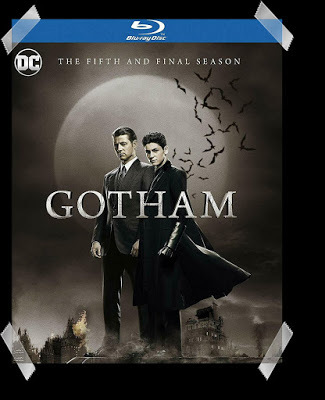 Gotham has come a long way since my rave about its first season. Within a few months of my review, the moody and gangster-littered GCPD procedural had become a fully-fledged Batman TV series in all but name – albeit one marked by the absence of the eponymous Dark Knight. Just as Smallville’s showrunners had, Gotham’s quickly tired of the constraints imposed by the series’ prequel setting and set about turning the likes of young Oswald Cobblepot and Edward Nygma into realistic renditions of their comic-book alter egos. Prized works the likes of Year One, The Long Hallowe’en and even The Killing Joke served as inspiration for story arcs both short and long as Gotham surrendered sense to spectacle in a three-year stint that saw it shed around three million regular viewers whilst still cultivating a passionate following. These Gothamites were understandably – and unexpectedly - thrilled last year when, despite the deteriorating viewing figures, FOX renewed the show for a half-length fifth and final season that would be - slightly misleadingly - subtitled Legend of the Dark Knight.
Gotham has come a long way since my rave about its first season. Within a few months of my review, the moody and gangster-littered GCPD procedural had become a fully-fledged Batman TV series in all but name – albeit one marked by the absence of the eponymous Dark Knight. Just as Smallville’s showrunners had, Gotham’s quickly tired of the constraints imposed by the series’ prequel setting and set about turning the likes of young Oswald Cobblepot and Edward Nygma into realistic renditions of their comic-book alter egos. Prized works the likes of Year One, The Long Hallowe’en and even The Killing Joke served as inspiration for story arcs both short and long as Gotham surrendered sense to spectacle in a three-year stint that saw it shed around three million regular viewers whilst still cultivating a passionate following. These Gothamites were understandably – and unexpectedly - thrilled last year when, despite the deteriorating viewing figures, FOX renewed the show for a half-length fifth and final season that would be - slightly misleadingly - subtitled Legend of the Dark Knight. Despite its many crippling logical flaws, I love Gotham just as much as I did when it first started. With Batman, if not Bruce Wayne, seemingly the exclusive preserve of the silver screen now and for the foreseeable future, it’s probably the closest that we’ll get to a live-action Batman TV show for a long time (one that’s inspired by DC’s Dark and Modern Ages, anyway, as opposed to the camp capers of Batman ’66). Though often playful, Gotham’s tone is deliciously dark and its characterisation is exceptional. The show’s second-season subtitles Rise of the Villains and Wrath of the Villains were well-deserved as actors the calibre of Robin Lord Taylor and Cory Michael Smith made Penguin and the Riddler just as important – and sometimes just as sympathetic - to the audience as Jim Gordon and Bruce Wayne. Erin Richards created a Gotham City Siren out of nothing. Cameron Monaghan, somehow, exorcised the ghost of Heath Ledger and reinvented the very idea of the Joker in the most expansive and enthralling of ways – and all without once uttering the “J” word. Naturally, I’d have preferred to see these embryotic legends evolve over a fifteen-year period instead of four and a bit, but the fact that Gotham was a race rather than a run doesn’t negate the incredible work of its writers and actors. If you can forgive the narrative convenience of ten-year comas, long stretches in Arkham and an eighteen-year-old’s face lurking beneath that famous cape and cowl when all’s said and done, you might come to share my view that Gotham boasts the definitive interpretations of many of the mythology’s most iconic characters.
Despite its many crippling logical flaws, I love Gotham just as much as I did when it first started. With Batman, if not Bruce Wayne, seemingly the exclusive preserve of the silver screen now and for the foreseeable future, it’s probably the closest that we’ll get to a live-action Batman TV show for a long time (one that’s inspired by DC’s Dark and Modern Ages, anyway, as opposed to the camp capers of Batman ’66). Though often playful, Gotham’s tone is deliciously dark and its characterisation is exceptional. The show’s second-season subtitles Rise of the Villains and Wrath of the Villains were well-deserved as actors the calibre of Robin Lord Taylor and Cory Michael Smith made Penguin and the Riddler just as important – and sometimes just as sympathetic - to the audience as Jim Gordon and Bruce Wayne. Erin Richards created a Gotham City Siren out of nothing. Cameron Monaghan, somehow, exorcised the ghost of Heath Ledger and reinvented the very idea of the Joker in the most expansive and enthralling of ways – and all without once uttering the “J” word. Naturally, I’d have preferred to see these embryotic legends evolve over a fifteen-year period instead of four and a bit, but the fact that Gotham was a race rather than a run doesn’t negate the incredible work of its writers and actors. If you can forgive the narrative convenience of ten-year comas, long stretches in Arkham and an eighteen-year-old’s face lurking beneath that famous cape and cowl when all’s said and done, you might come to share my view that Gotham boasts the definitive interpretations of many of the mythology’s most iconic characters.
Sean Pertwee’s grizzled, Earth One-style, ex-military Alfred is a far more captivating take on the usually sardonic and theatrical butler than any portrayal before or since, while Camren Bicondova’s Selina Kyle becomes the franchise’s most grounded take on Catwoman since Year One. Another standout is Donal Logue’s Harvey Bullock, a character slightly short-changed in the series’ middle seasons but once again brought to the fore for the final run, where he’s even indulged with an episode built entirely around him and his past. Most remarkable of all though is Ben McKenzie’s Jim Gordon, whose five-year journey has been so damned heroic that it threatened to undermine the very need for a Batman.

 Gotham’s truncated final run would take its inspiration from the brutal No Man’s Land storyline that ran through most of the Bat-family titles that were in print twenty years ago. I’ve read as much of the arc as has been republished in trade collections (over two thousand pages’ worth!) and, whilst it was certainly an incredibly inventive and harrowing run of stories (Gotham really should have borrowed the retrieving of ammo from corpses), it certainly didn’t look like the optimal way to start tying up a prequel show’s threads. Of course, it wasn’t the showrunners’ plan to conclude Gotham with their take on No Man’s Land – they’d written themselves into the corner with the previous season’s concluding cataclysm in the hope of having at least another full-length season, if not more, to finish their story. Yet, serendipitously, cutting Gotham off from civilisation gives the show’s swansong a tight, insular feel in keeping with the series’ over-arching tone. Removed from the rest of the world and free from the rule of law, the harsh conditions of Season 5 highlight exactly who each of our principal characters are. For some, like Harvey Bullock, it emphasises who they’ve become. For others, like Bruce Wayne, it points to who they’ll be. And for Jim Gordon, the city’s champion of today, it’s probably his finest hour.
Gotham’s truncated final run would take its inspiration from the brutal No Man’s Land storyline that ran through most of the Bat-family titles that were in print twenty years ago. I’ve read as much of the arc as has been republished in trade collections (over two thousand pages’ worth!) and, whilst it was certainly an incredibly inventive and harrowing run of stories (Gotham really should have borrowed the retrieving of ammo from corpses), it certainly didn’t look like the optimal way to start tying up a prequel show’s threads. Of course, it wasn’t the showrunners’ plan to conclude Gotham with their take on No Man’s Land – they’d written themselves into the corner with the previous season’s concluding cataclysm in the hope of having at least another full-length season, if not more, to finish their story. Yet, serendipitously, cutting Gotham off from civilisation gives the show’s swansong a tight, insular feel in keeping with the series’ over-arching tone. Removed from the rest of the world and free from the rule of law, the harsh conditions of Season 5 highlight exactly who each of our principal characters are. For some, like Harvey Bullock, it emphasises who they’ve become. For others, like Bruce Wayne, it points to who they’ll be. And for Jim Gordon, the city’s champion of today, it’s probably his finest hour. 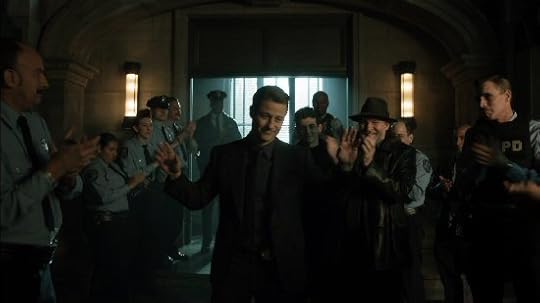
Divorced from the United States, Jim has to lead from the front. McKenzie has always vested the character with the necessary stoicism to evoke the future police commissioner, but this season sees him to do so in the most challenging of circumstances as it’s not only Gotham that’s gone to Hell, but his personal life too. This much the season has in common with the comic-book version of No Man’s Land, in which a weathered Commissioner Gordon leads his Blue Boys in their mission to retake the city one block at a time - ultimately at staggering personal cost.
 The comics’ broad backdrop is as far as the “adaptation” goes, though - as ever, Gotham tells its own story in its own unique and subversive way. Jim doesn’t lose a wife here - he gains one. He doesn’t patch things up with an old brother in arms - he goes to war with one. And, just because Gotham is Gotham, along the way he gets his psychotic ex up the duff with a baby Batgirl, on the face of it just because she was once a dead cert to one day become Mrs Barbara Gordon. Put like that, it might sound like the type of twisted logic that underpinned the latter half of
Game of Thrones
, but within the suffocating enclosure of No Man’s Land these pieces all click into place with a feeling of inevitability rather than expediency.
The comics’ broad backdrop is as far as the “adaptation” goes, though - as ever, Gotham tells its own story in its own unique and subversive way. Jim doesn’t lose a wife here - he gains one. He doesn’t patch things up with an old brother in arms - he goes to war with one. And, just because Gotham is Gotham, along the way he gets his psychotic ex up the duff with a baby Batgirl, on the face of it just because she was once a dead cert to one day become Mrs Barbara Gordon. Put like that, it might sound like the type of twisted logic that underpinned the latter half of
Game of Thrones
, but within the suffocating enclosure of No Man’s Land these pieces all click into place with a feeling of inevitability rather than expediency.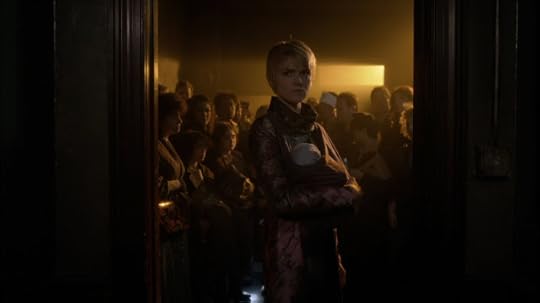 Indeed, the story of Barbara Kean is one of Gotham’s most notable. Originally introduced as Jim’s first-season love interest, the writers’ quickly seized upon Erin Richards’ wickedly cool portrayal and allowed the character to blossom into one of the city’s most infamous gangland villains and, in a particularly exciting move, even an heir to the Demon himself, Ra’s al Ghul. In of itself, this would have been a remarkable enough departure from the source material, but the show was careful never to paint Barbara completely black. As storylines progressed we saw more and more grey chinks in her maleficence, until the cataclysm left her poised on the brink of redemption; an unlikely ally of Bruce Wayne in his war against Ra’s. Whilst grounded in self-interest, Barbara’s bad-ass actions towards the end of the preceding season betrayed something else stirring beneath the surface – something honourable, if not entirely good.
Indeed, the story of Barbara Kean is one of Gotham’s most notable. Originally introduced as Jim’s first-season love interest, the writers’ quickly seized upon Erin Richards’ wickedly cool portrayal and allowed the character to blossom into one of the city’s most infamous gangland villains and, in a particularly exciting move, even an heir to the Demon himself, Ra’s al Ghul. In of itself, this would have been a remarkable enough departure from the source material, but the show was careful never to paint Barbara completely black. As storylines progressed we saw more and more grey chinks in her maleficence, until the cataclysm left her poised on the brink of redemption; an unlikely ally of Bruce Wayne in his war against Ra’s. Whilst grounded in self-interest, Barbara’s bad-ass actions towards the end of the preceding season betrayed something else stirring beneath the surface – something honourable, if not entirely good.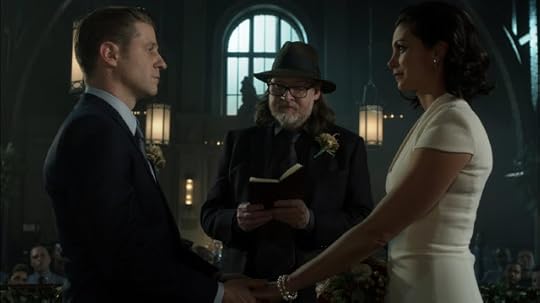 And the eventual Mrs Gordon’s tale has been every bit as turbulent as Barbara’s. From practising medicine at Arkham Asylum though marriage to the mob to becoming the so-called Queen of the Narrows, Leslie Thompkin’s narrative couldn’t be any further away from her comic-book counterpart’s. However, both versions of the character are built upon fierce moral fortitude and a self-sacrificing desire to help others - qualities that make Lee the perfect partner for Jim as he fights to maintain his own ethics while trying to safeguard innocent citizens in the ruins of society. In a universe where Barbara Kean is a murderous vixen and Sarah Essen has yet to set foot in the GCPD, Lee had to be the one at Jim’s side when “The Beginning” arrived. It may not be comic-book accurate, but it’s true to the characters as brought to life by Ben McKenzie and Morena Baccarin, and deeply rewarding for the viewers who invested so heavily in their relationship.
And the eventual Mrs Gordon’s tale has been every bit as turbulent as Barbara’s. From practising medicine at Arkham Asylum though marriage to the mob to becoming the so-called Queen of the Narrows, Leslie Thompkin’s narrative couldn’t be any further away from her comic-book counterpart’s. However, both versions of the character are built upon fierce moral fortitude and a self-sacrificing desire to help others - qualities that make Lee the perfect partner for Jim as he fights to maintain his own ethics while trying to safeguard innocent citizens in the ruins of society. In a universe where Barbara Kean is a murderous vixen and Sarah Essen has yet to set foot in the GCPD, Lee had to be the one at Jim’s side when “The Beginning” arrived. It may not be comic-book accurate, but it’s true to the characters as brought to life by Ben McKenzie and Morena Baccarin, and deeply rewarding for the viewers who invested so heavily in their relationship.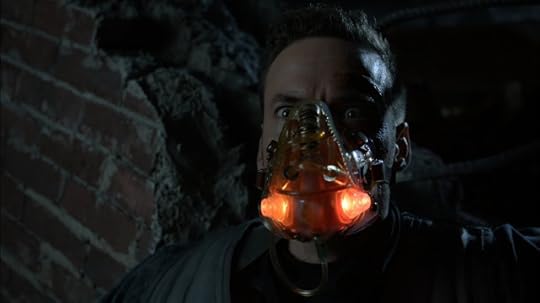 “You’re going to be reborn, and then you’re going to be the bane of the unjust.”
“You’re going to be reborn, and then you’re going to be the bane of the unjust.”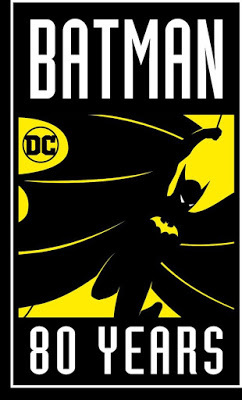 The coming of Bane (Shane West) is handled just as shrewdly. Although the character has always been conceptually linked to Batman, the show shifts that emphasis onto Jim, creating a shared history between the two men that allows the show’s central hero to take ownership of its final season’s big bad. Eduardo Dorrance was Jim Gordon’s friend. Now Bane is Jim Gordon’s nemesis. This version of Bane might have a whole new raison d’être, at least for now, but the essential flavour of the character is retained thanks to Eduardo’s Hispanic lineage and the time that he spent imprisoned in Peña Duro. Even his affiliation with Nyssa al Ghul feels deliciously apposite, cementing The Dark Knight Rises overtones already evoked by Shane West’s overtly Tom Hardy-inspired performance.
The coming of Bane (Shane West) is handled just as shrewdly. Although the character has always been conceptually linked to Batman, the show shifts that emphasis onto Jim, creating a shared history between the two men that allows the show’s central hero to take ownership of its final season’s big bad. Eduardo Dorrance was Jim Gordon’s friend. Now Bane is Jim Gordon’s nemesis. This version of Bane might have a whole new raison d’être, at least for now, but the essential flavour of the character is retained thanks to Eduardo’s Hispanic lineage and the time that he spent imprisoned in Peña Duro. Even his affiliation with Nyssa al Ghul feels deliciously apposite, cementing The Dark Knight Rises overtones already evoked by Shane West’s overtly Tom Hardy-inspired performance.Where this final season ultimately triumphs, though, is in the apotheosis of the series’ long-running Joker storyline, which stretches right back to “The Blind Fortune Teller” in the first season. Unlike the Bat’s other prominent nemeses, the Joker didn’t naturally lend himself to a prequel series. If anything, the character’s always been at his best when he’s shrouded in intrigue. Red Hood? Jack Napier? Pale Man? Arthur Fleck? The Dark Knight’s most infamous enemy has had as many potential back stories across the media as Batman has had Robins. And to its great credit, rather than fashion its own inevitably mystique-killing origin story for the Clown Prince of Crime, Gotham builds upon an alluring idea first posited by Alan Moore in The Killing Joke. Over five years, the series takes the character’s nebulous, “multiple choice” past and makes the notion finite. Multiple origins. Multiple dead ends. Multiple possibilities. Gotham’s Joker is not a mad man but a mad idea; an infectious evil spreading from one individual to another and most memorably embodied by Cameron Monaghan’s antagonistic, chalk-and-cheese Valeska twins.
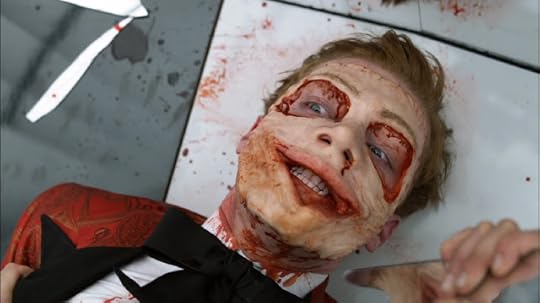 As the second season hit its stride, Jerome Valeska could have conceivably been a youthful version of the ragged lunatic from The Dark Knight. Heath Ledger’s anarchic pipe bomb of a performance was effortlessly emulated and even embellished by Monaghan, whose exuberant and terrifying portrayal raised the bar for the series so very high that his character’s untimely demise threatened to derail it. Of course, the Joker has rarely let death hold him back, and to universal delight Jerome would be resurrected – less his face - to play out a perverse, live-action version of Scott Snyder’s Death of the Family. Like most comic-book shows, Gotham might be derivative at heart, but when it borrows, it borrows from the best.
As the second season hit its stride, Jerome Valeska could have conceivably been a youthful version of the ragged lunatic from The Dark Knight. Heath Ledger’s anarchic pipe bomb of a performance was effortlessly emulated and even embellished by Monaghan, whose exuberant and terrifying portrayal raised the bar for the series so very high that his character’s untimely demise threatened to derail it. Of course, the Joker has rarely let death hold him back, and to universal delight Jerome would be resurrected – less his face - to play out a perverse, live-action version of Scott Snyder’s Death of the Family. Like most comic-book shows, Gotham might be derivative at heart, but when it borrows, it borrows from the best.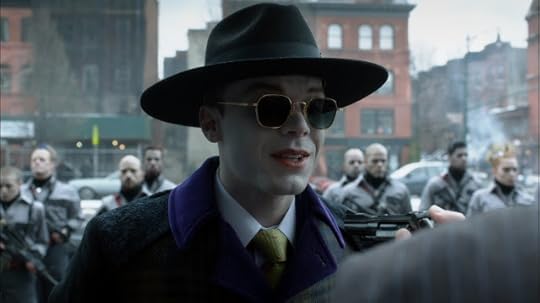
 The show’s penultimate season introduced us to Jerome’s straight-laced, super-smart architect of a twin brother, Jeremiah, whose exposure to his brother’s trademark laughing gas would drive him crazy – but it would be craziness equal and opposite to his soon-to-be late brother’s. Clad in a purple suit and hat and with skin paler than Rodney Trotter’s, Jeremiah Valeska looked set to claim the mantle of Joker. He quickly gained power and influence. His colourful cult of personality grew to include a prototypical Harley Quinn, Echo, along with legions of black-clad adherents. Yet Monagahan’s portrayal of Jeremiah would place method at the heart of the madness: the genius lacking in Jerome was now there in spades, but the humour-fuelled anarchism typical of both Jerome and the Joker was eerily absent.
The show’s penultimate season introduced us to Jerome’s straight-laced, super-smart architect of a twin brother, Jeremiah, whose exposure to his brother’s trademark laughing gas would drive him crazy – but it would be craziness equal and opposite to his soon-to-be late brother’s. Clad in a purple suit and hat and with skin paler than Rodney Trotter’s, Jeremiah Valeska looked set to claim the mantle of Joker. He quickly gained power and influence. His colourful cult of personality grew to include a prototypical Harley Quinn, Echo, along with legions of black-clad adherents. Yet Monagahan’s portrayal of Jeremiah would place method at the heart of the madness: the genius lacking in Jerome was now there in spades, but the humour-fuelled anarchism typical of both Jerome and the Joker was eerily absent.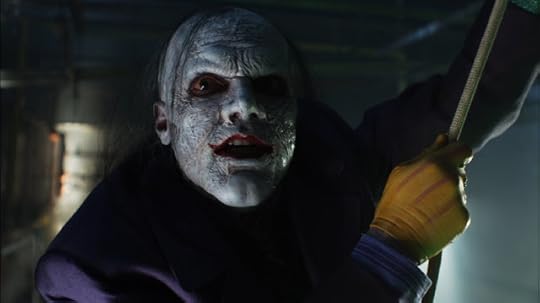 “Sometimes I remember it one way, sometimes another... If I’m going to have a past, I prefer it to be multiple choice! Ha ha ha!”
“Sometimes I remember it one way, sometimes another... If I’m going to have a past, I prefer it to be multiple choice! Ha ha ha!”It wouldn’t be until “Ace Chemicals”, and Jeremiah’s second attempt to break the young Bruce Wayne, that Gotham would send its embryonic Joker tumbling into a vat of noxious chemicals – probably the most common element in all his possible pasts. His injuries would leave him looking like the distillation of just about every Joker that there’s ever been, but more importantly they would complete his mental transformation, somehow merging the sensibilities of the twin Valeskas into what has the potential to be the ultimate Joker. Sadly, as Gotham ends with “The Beginning”, we may never get to see Monagahan test that potential. The much-hyped appearance of Mr J is all but restricted to the final act of the final episode, serving more as a teaser for a series that we know will never come than as a satisfying finale.
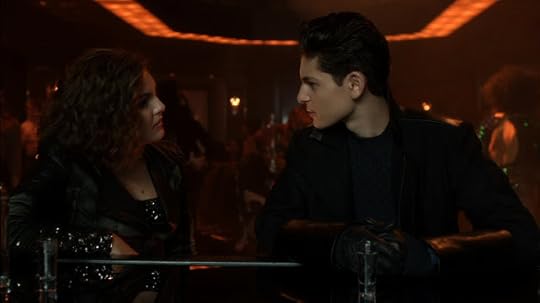
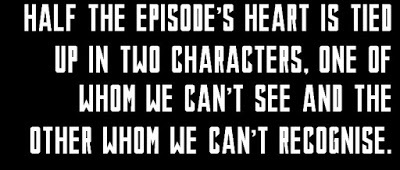
Flashing forward to ten years after the events of “They Did What?”, the concluding part of the No Man’s Land storyline, “The Beginning” is an awkward but necessary leap - one charged with expectation as viewers brace themselves for the rise of the villains and the coming of the Bat. The trouble is, most of the villains rose long ago, and the Bat can’t really be shown on screen, lest viewers twig that he’s being played by a stuntman and a teenager. David Mazouz’s near-absence is felt almost as keenly as Camren Bicondova’s recasting – half the episode’s heart is tied up in two characters, one of whom we can’t see and the other whom we can’t recognise. Worse still, Penguin and the Ridder are reduced from believable, multi-faceted characters to colourful caricatures torn straight out of a show cancelled fifty years earlier. When Penguin emerges from his decade-long incarceration somehow fatter and donning a monocle, you half expect Adam West and Burt Ward to come running around the corner to escort him back to Blackgate.
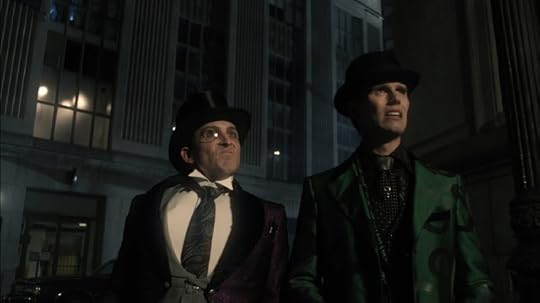 Fortunately, “The Beginning” does get some things right. Sean Pertwee’s Alfred transitions effortlessly from the rough military father figure of the principal series to the more mannerly butler of the comics and most films. He may be more Jeremy Irons than Alfred Gough, but that’s all to the good. Harvey Bullock finds himself at Commissioner Gordon’s trusted right hand, where he belongs, whereas the Commish himself mischievously summarises Gotham’s attitude towards eighty years of Batman lore by shaving off his obligatory moustache after a just few minutes on screen. To me, that says it all.
Fortunately, “The Beginning” does get some things right. Sean Pertwee’s Alfred transitions effortlessly from the rough military father figure of the principal series to the more mannerly butler of the comics and most films. He may be more Jeremy Irons than Alfred Gough, but that’s all to the good. Harvey Bullock finds himself at Commissioner Gordon’s trusted right hand, where he belongs, whereas the Commish himself mischievously summarises Gotham’s attitude towards eighty years of Batman lore by shaving off his obligatory moustache after a just few minutes on screen. To me, that says it all.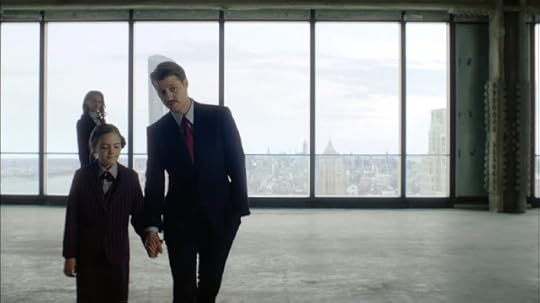 The season’s Blu-ray release improves upon the last few seasons’ bonus material slightly, particularly when you consider that it’s supplemental to only half the number of episodes usually released. On top of the compulsory Comic-Con panel highlights, the two discs also house a short feature teasing the season entitled Gotham’s Last Stand as well as a fifteen-minute series retrospective, Gotham: A Modern Mythology, which has been produced to DC Entertainment’s usually lofty standards, albeit with an usually stunted runtime.
The season’s Blu-ray release improves upon the last few seasons’ bonus material slightly, particularly when you consider that it’s supplemental to only half the number of episodes usually released. On top of the compulsory Comic-Con panel highlights, the two discs also house a short feature teasing the season entitled Gotham’s Last Stand as well as a fifteen-minute series retrospective, Gotham: A Modern Mythology, which has been produced to DC Entertainment’s usually lofty standards, albeit with an usually stunted runtime.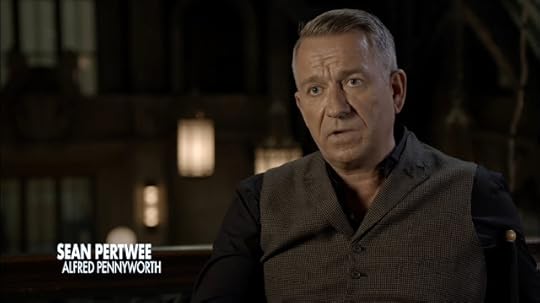
However, the most interesting offering is a wider one, and one that’s not exclusive to this release, such is its scope. Villains: Modes of Persuasion takes the viewer on a deep journey into the warped minds of rogues summoned from every corner of the current DC TV landscape. Whether its especial focus on the villains of Gotham is deliberate, or simply a recognition of the programme’s dominance on that front, I don’t know, but its inclusion on what is likely to be the series’ final home video release is certainly fitting. Already a huge fan of the Arrowverse, this piece is responsible for also getting me hooked on Krypton – just as they’ve cancelled it. Thanks for that, Warner Bros.
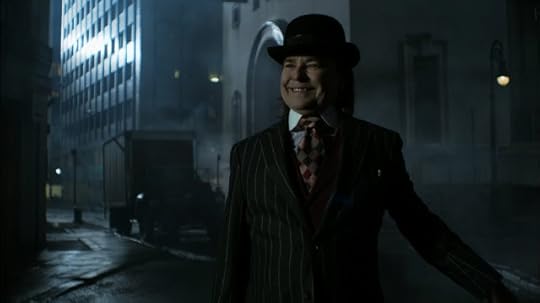 The release is rounded out with a rather lacklustre selection of pithy deleted scenes, only one of which – between Jim and Barbara – really merits any attention. This hasn’t stopped the cut Penguin and Riddler sequence from “The Beginning” from becoming quite a talking point, however, though only because it’s potentially very confusing (perhaps offering us a clue as to why it was cut). The brolly-twirling, bowler-hatted feller looks so ridiculously OTT that as a viewer you assume he’s another comic-book villain, one you can’t quite place, rather than just an extravagant chap in line for a prop-continuity mugging.
The release is rounded out with a rather lacklustre selection of pithy deleted scenes, only one of which – between Jim and Barbara – really merits any attention. This hasn’t stopped the cut Penguin and Riddler sequence from “The Beginning” from becoming quite a talking point, however, though only because it’s potentially very confusing (perhaps offering us a clue as to why it was cut). The brolly-twirling, bowler-hatted feller looks so ridiculously OTT that as a viewer you assume he’s another comic-book villain, one you can’t quite place, rather than just an extravagant chap in line for a prop-continuity mugging.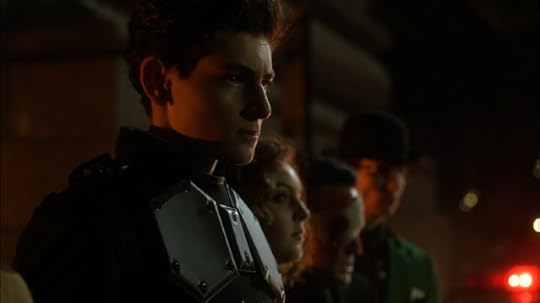 Nonetheless, despite Gotham’s final season being readily available to Netflix subscribers, the Blu-ray’s documentaries should make it an attractive prospect for those who still value physical media and/or are sticklers for quality. Had it been released as a steelbook, then this collection would most definitely have earned itself a permanent place on my own shelf. Cheaply packaging as it is, though, an iTunes season pass will probably serve me better in the long-term. Add to CheapCharts wishlist…
Nonetheless, despite Gotham’s final season being readily available to Netflix subscribers, the Blu-ray’s documentaries should make it an attractive prospect for those who still value physical media and/or are sticklers for quality. Had it been released as a steelbook, then this collection would most definitely have earned itself a permanent place on my own shelf. Cheaply packaging as it is, though, an iTunes season pass will probably serve me better in the long-term. Add to CheapCharts wishlist…Gotham: The Fifth and Final Season is available now on Blu-ray, with today’s cheapest online retailer being Amazon , who have it listed for £29.99 including delivery. Alternatively, the season can be downloaded in 1080p from iTunes with many of the same bonus features (Villains: Modes of Persuasion amongst them) for just £19.99. A complete Gotham Blu-ray box set is also available. Zavvi, who are offering it at £68.99, appear to the cheapest retailer for this presently.
Published on August 03, 2019 05:57
July 19, 2019
Blu-ray Review | Red Dwarf: Complete Series I - VIII
Not to be confused with the controversial 1990s Red Dwarf Re-Mastered project, this long-awaited release presents the series’ initial eight-season run in its original form along with the Xtended alternatives to “Tikka to Ride”; “Ouroboros”; “Duct Soup”; “Back in the Red”; and even a cobbled-together edition of “Pete”. Whilst the show’s fifty-two episodes and their variants have all been upscaled, arguably even enhanced, for the Blu-ray format, you won’t find the backs of Doug Naylor and Ed Bye’s heads crudely imposed onto funerals or rogue blue-screen skutters distracting from the simple comedy of an early Lister / Rimmer spat here.

A veritable one-stop shop for the series’ BBC era, this nineteen-disc set includes almost all of the highly-regarded supplementary material from the groundbreaking noughties’ DVD releases, which together with Doctor Who really set the bar for the medium. However, these special features haven’t been upscaled, or even transferred onto Blu-ray disc – instead we’re essentially presented with a copy of each bonus DVD as was. Whilst this gives rise to a lot of unnecessary disc-swapping, it’s hard to grumble about when we have so much quality programming gathered together in one set. Even the once-exclusive content from the hard-to-find Bodysnatcher Collection has been ported over, Re-Mastered commentaries and all, with only the Re-Mastered episodes themselves conspicuous in their (nonetheless welcome) absence. You could be forgiven for missing “Bodysnatcher” and its superlative selection of special features (the Series I and II retrospectives amongst them), though, as for some reason it is hidden in a newspaper-giveaway style cardboard slipcase and buried beneath the box set’s booklet, which contains the only real clue as to its existence. It’s a bizarre design decision that reeks of afterthought, in some respects summing up both the strengths and weaknesses of this release in one fell swoop.
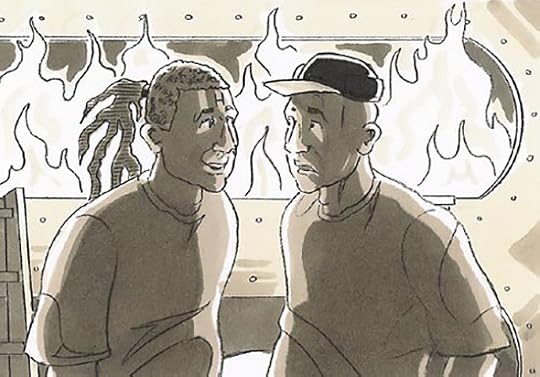 Above: Animation fuses with Chris Barrie’s energetic narration to bring “lost” Dwarf to life The box set itself is attractive enough, and sturdier than I had expected, but the overall effect is underwhelming – particularly if you have an eye for detail. A botched logo and a puzzling penchant for pixilation – surely the exact opposite of high-definition? - are the least of the problems evident on close inspection. Even the booklet, the inclusion of which should always be singled out for praise in these increasingly digital days, is but a glossy ghost of the DVDs’ detailed offerings; instructive but lifeless. Compare this box set’s offering against one of those from the recently-released and luxuriant Doctor Who Collection releases and note the difference. The Blu-ray menus are plagued by a similar lack of effort, with Series II even managing to get one of its episodes’ names wrong. Thanks…
Above: Animation fuses with Chris Barrie’s energetic narration to bring “lost” Dwarf to life The box set itself is attractive enough, and sturdier than I had expected, but the overall effect is underwhelming – particularly if you have an eye for detail. A botched logo and a puzzling penchant for pixilation – surely the exact opposite of high-definition? - are the least of the problems evident on close inspection. Even the booklet, the inclusion of which should always be singled out for praise in these increasingly digital days, is but a glossy ghost of the DVDs’ detailed offerings; instructive but lifeless. Compare this box set’s offering against one of those from the recently-released and luxuriant Doctor Who Collection releases and note the difference. The Blu-ray menus are plagued by a similar lack of effort, with Series II even managing to get one of its episodes’ names wrong. Thanks…
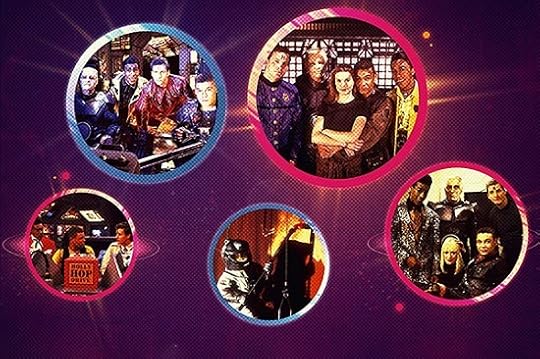
The episodes themselves, for the most part, look better than they have ever done – if you watch them on a ten-year-old TV. Blown up well beyond their intended proportions on a contemporary 4K TV, though, they look much as they always did, warts and all, only bigger – any gains made in upscaling are lost to the larger canvas. But if I watch them on the 26” TV now relegated to our bedroom, they do look far better than the DVDs ever did on there – particularly the filmic Red Dwarf VII. The built-in problem with this type of release is that we’re never comparing like for like, and so we’re always destined to be disappointed. You can’t invent resolution. You can’t create fidelity. What this box set does is provide us with the best possible means to carry classic Dwarf into the next era of television, looking much as it always did – which is, I’m afraid to say, a bit rubbish.
Because I held out for a while before picking this up, I was fortunate enough to receive the corrected edition, but if you notice that Series III and V look even less impressive than the rest of the episodes, then you’ve probably received discs from the original pressing in which certain episodes had been mistakenly deinterlaced (effectively losing half of the information in the picture and significantly reducing the quality). If so, you can obtain replacement discs from the BBC by clicking here.

Overall, the lack of quality control on this release is lamentable, but equal to its pricing. To be able to pick up the entire BBC run of Red Dwarf for less than a couple of seasons would have cost you on DVD back in the day is a genuine gift – unless, of course, you already own the DVDs and don’t have a massive telly, in which case all this box set would really save you is a bit of shelf space.
Today’s cheapest retailers for the Red Dwarf: Complete Series I - VIII Blu-ray are Zavvi and Amazon , who each have it listed for £30.98 inclusive of delivery.

A veritable one-stop shop for the series’ BBC era, this nineteen-disc set includes almost all of the highly-regarded supplementary material from the groundbreaking noughties’ DVD releases, which together with Doctor Who really set the bar for the medium. However, these special features haven’t been upscaled, or even transferred onto Blu-ray disc – instead we’re essentially presented with a copy of each bonus DVD as was. Whilst this gives rise to a lot of unnecessary disc-swapping, it’s hard to grumble about when we have so much quality programming gathered together in one set. Even the once-exclusive content from the hard-to-find Bodysnatcher Collection has been ported over, Re-Mastered commentaries and all, with only the Re-Mastered episodes themselves conspicuous in their (nonetheless welcome) absence. You could be forgiven for missing “Bodysnatcher” and its superlative selection of special features (the Series I and II retrospectives amongst them), though, as for some reason it is hidden in a newspaper-giveaway style cardboard slipcase and buried beneath the box set’s booklet, which contains the only real clue as to its existence. It’s a bizarre design decision that reeks of afterthought, in some respects summing up both the strengths and weaknesses of this release in one fell swoop.
 Above: Animation fuses with Chris Barrie’s energetic narration to bring “lost” Dwarf to life The box set itself is attractive enough, and sturdier than I had expected, but the overall effect is underwhelming – particularly if you have an eye for detail. A botched logo and a puzzling penchant for pixilation – surely the exact opposite of high-definition? - are the least of the problems evident on close inspection. Even the booklet, the inclusion of which should always be singled out for praise in these increasingly digital days, is but a glossy ghost of the DVDs’ detailed offerings; instructive but lifeless. Compare this box set’s offering against one of those from the recently-released and luxuriant Doctor Who Collection releases and note the difference. The Blu-ray menus are plagued by a similar lack of effort, with Series II even managing to get one of its episodes’ names wrong. Thanks…
Above: Animation fuses with Chris Barrie’s energetic narration to bring “lost” Dwarf to life The box set itself is attractive enough, and sturdier than I had expected, but the overall effect is underwhelming – particularly if you have an eye for detail. A botched logo and a puzzling penchant for pixilation – surely the exact opposite of high-definition? - are the least of the problems evident on close inspection. Even the booklet, the inclusion of which should always be singled out for praise in these increasingly digital days, is but a glossy ghost of the DVDs’ detailed offerings; instructive but lifeless. Compare this box set’s offering against one of those from the recently-released and luxuriant Doctor Who Collection releases and note the difference. The Blu-ray menus are plagued by a similar lack of effort, with Series II even managing to get one of its episodes’ names wrong. Thanks…
The episodes themselves, for the most part, look better than they have ever done – if you watch them on a ten-year-old TV. Blown up well beyond their intended proportions on a contemporary 4K TV, though, they look much as they always did, warts and all, only bigger – any gains made in upscaling are lost to the larger canvas. But if I watch them on the 26” TV now relegated to our bedroom, they do look far better than the DVDs ever did on there – particularly the filmic Red Dwarf VII. The built-in problem with this type of release is that we’re never comparing like for like, and so we’re always destined to be disappointed. You can’t invent resolution. You can’t create fidelity. What this box set does is provide us with the best possible means to carry classic Dwarf into the next era of television, looking much as it always did – which is, I’m afraid to say, a bit rubbish.
Because I held out for a while before picking this up, I was fortunate enough to receive the corrected edition, but if you notice that Series III and V look even less impressive than the rest of the episodes, then you’ve probably received discs from the original pressing in which certain episodes had been mistakenly deinterlaced (effectively losing half of the information in the picture and significantly reducing the quality). If so, you can obtain replacement discs from the BBC by clicking here.

Overall, the lack of quality control on this release is lamentable, but equal to its pricing. To be able to pick up the entire BBC run of Red Dwarf for less than a couple of seasons would have cost you on DVD back in the day is a genuine gift – unless, of course, you already own the DVDs and don’t have a massive telly, in which case all this box set would really save you is a bit of shelf space.
Today’s cheapest retailers for the Red Dwarf: Complete Series I - VIII Blu-ray are Zavvi and Amazon , who each have it listed for £30.98 inclusive of delivery.
Published on July 19, 2019 02:33
July 1, 2019
Blu-ray Review | Star Trek: The Next Generation - Season Three
 Ira Steven Behr succinctly sums up the third season of Star Trek: The Next Generation (“TNG”) in the quotation that opens this Blu-ray’s flagship three-part documentary, Resistance is Futile: Assimilating the Next Generation. Though far from being the show’s strongest showing, Season 3 saw the show transition from being a po-faced imitation of the original series (“TOS”) into a genuinely thought-provoking and frequently action-packed series infinitely superior its forerunner. TOS-style, allegory-driven planet-hopping gave way to much more subtle morality plays built around individual characters. The rigid rules of Roddenberry were forced to bend as the show finally acknowledged its past and embraced its future.
Ira Steven Behr succinctly sums up the third season of Star Trek: The Next Generation (“TNG”) in the quotation that opens this Blu-ray’s flagship three-part documentary, Resistance is Futile: Assimilating the Next Generation. Though far from being the show’s strongest showing, Season 3 saw the show transition from being a po-faced imitation of the original series (“TOS”) into a genuinely thought-provoking and frequently action-packed series infinitely superior its forerunner. TOS-style, allegory-driven planet-hopping gave way to much more subtle morality plays built around individual characters. The rigid rules of Roddenberry were forced to bend as the show finally acknowledged its past and embraced its future.
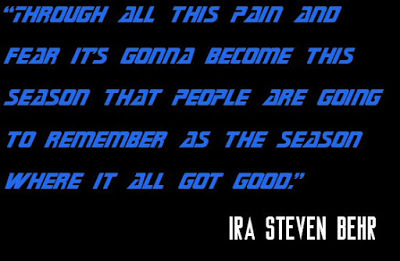 This particular season is one that I look back on with intense affection as it was the first full season that I was on board for, having beamed aboard just over half-way through the previous run. After being transfixed by the unnerving “Q Who?”, I religiously videotaped every episode of the show from “Samaritan Snare” onwards, revisiting Season 3 highlights such as “Yesterday’s Enterprise” and “Who Watchers the Watchers?” ad infinitum as the mounting Memorex threatened to entomb me.
This particular season is one that I look back on with intense affection as it was the first full season that I was on board for, having beamed aboard just over half-way through the previous run. After being transfixed by the unnerving “Q Who?”, I religiously videotaped every episode of the show from “Samaritan Snare” onwards, revisiting Season 3 highlights such as “Yesterday’s Enterprise” and “Who Watchers the Watchers?” ad infinitum as the mounting Memorex threatened to entomb me. 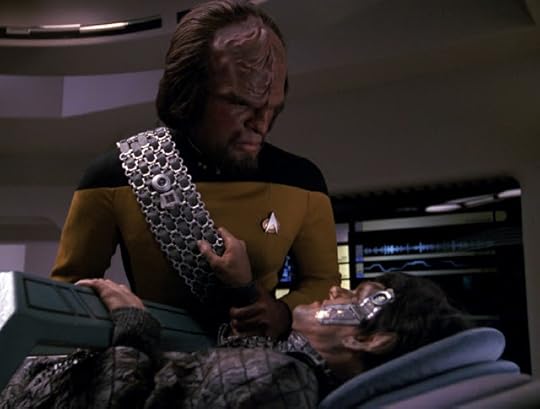
Many of my favourite Trek moments lurk in the midst of this great season – how brave and inspired was it to have Worf refuse to give blood to save a Romulan’s life? Of course he wouldn’t, dramatic convention be damned. How devastating is it to watch Tasha Yar help to lead the Enterprise-C to its certain destruction at Narendra III, all to restore a peaceful present where she’ll die a meaningless death? Can you really sit through the last ten minutes of “The Offspring” without tears welling up, convinced that you’re seeing emotions on Brent Spiner’s face that just aren’t there?
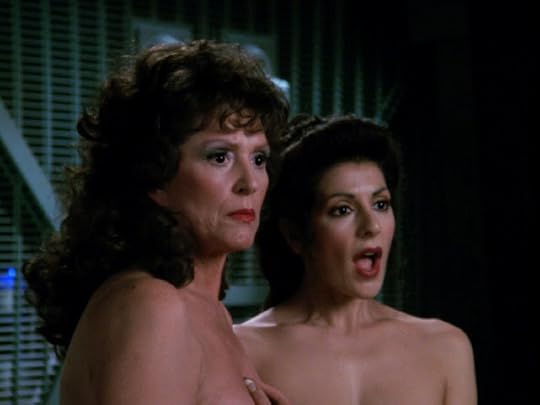
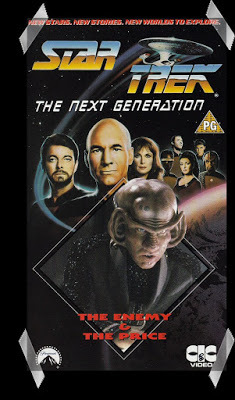 However, revisiting these adventures so many years later has been a rather sobering experience as I’ve been painfully reminded that for every inventive and unsettling effort like “The Survivors”, there’s a “Ménage à Troi” lurking just around the corner like a predatory Ferengi, poised to make light of abduction and rape. To get to “The Defector”, and franchise veteran James Sloyan’s thrilling turn as Admiral Jarok (still Trek’s most compelling portrayal of a Romulan), you’ve got to first endure Will Riker wading cock-first through a tired old blood feud in “The Vengeance Factor”. Even the enthralling LeVar Burton / John Snyder two-hander, “The Enemy”, literally has its “Price” - particularly for those who used to buy the old two-episodes-per-tape VHS releases at £10.99 apiece rather than wait for Sky 1 or BBC2.
However, revisiting these adventures so many years later has been a rather sobering experience as I’ve been painfully reminded that for every inventive and unsettling effort like “The Survivors”, there’s a “Ménage à Troi” lurking just around the corner like a predatory Ferengi, poised to make light of abduction and rape. To get to “The Defector”, and franchise veteran James Sloyan’s thrilling turn as Admiral Jarok (still Trek’s most compelling portrayal of a Romulan), you’ve got to first endure Will Riker wading cock-first through a tired old blood feud in “The Vengeance Factor”. Even the enthralling LeVar Burton / John Snyder two-hander, “The Enemy”, literally has its “Price” - particularly for those who used to buy the old two-episodes-per-tape VHS releases at £10.99 apiece rather than wait for Sky 1 or BBC2.This season’s vastly variable quality reflects the turmoil behind the scenes, much of which is now well-documented in both Resistance is Futile and, less formally, the 71-minute writers’ roundtable moderated by super-fan Seth MacFarlane (Family Guy, The Orville). The latter is very well-placed on this third-season release as many of its contributors first wrote for TNG during its third year, and as such much of the discussion focuses on how they came to do so, and how the reality measured up against the dream. Maurice Hurley had left the show at end of the previous season, and his replacement, Michael I Wagner, lasted only a matter of weeks in the post. Former studio executive Michael Piller eventually stepped into the breach as the new show-running executive producer, penning the season-opening “Evolution” and quickly instigating a number of radical policies that would instantly renovate the show - chief amongst them, his open submissions scheme.
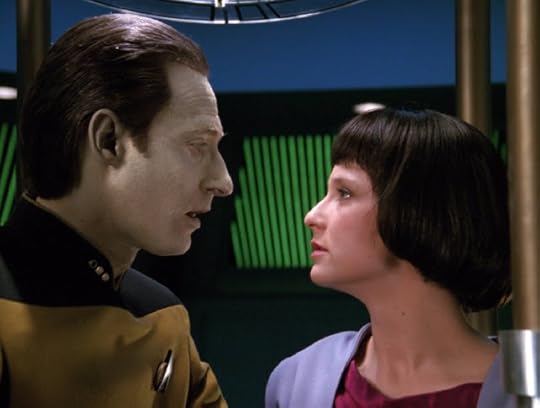 Particularly from today’s perspective, the notion that a show the calibre of TNG would even accept spec scripts, let alone solicit them and set up the infrastructure to have each one looked at, is absolutely incredible. Yet Piller made it one of his first orders of business, and as a result episodes the calibre of “The Offspring” were borne out of the slush pile. Though René Echevarria is the first to admit that he “screwed the pooch” with his script, and the credit for its success rests with Melinda M Snodgrass and the other staff writers who inherited it, the original idea for “The Offspring” brought Echevarria into the fold, and he would go on to deliver some of the series’ most emotionally-charged scripts. More crucially still, a set tour organised by Ronald D Moore’s girlfriend led to the commissioning of “The Bonding”, Moore’s first-ever script for television, the success of which saw Piller bring Moore onto the staff to rework “Yesterday’s Enterprise” before appointing him as executive story editor from “Sins of the Father” onwards.
Particularly from today’s perspective, the notion that a show the calibre of TNG would even accept spec scripts, let alone solicit them and set up the infrastructure to have each one looked at, is absolutely incredible. Yet Piller made it one of his first orders of business, and as a result episodes the calibre of “The Offspring” were borne out of the slush pile. Though René Echevarria is the first to admit that he “screwed the pooch” with his script, and the credit for its success rests with Melinda M Snodgrass and the other staff writers who inherited it, the original idea for “The Offspring” brought Echevarria into the fold, and he would go on to deliver some of the series’ most emotionally-charged scripts. More crucially still, a set tour organised by Ronald D Moore’s girlfriend led to the commissioning of “The Bonding”, Moore’s first-ever script for television, the success of which saw Piller bring Moore onto the staff to rework “Yesterday’s Enterprise” before appointing him as executive story editor from “Sins of the Father” onwards.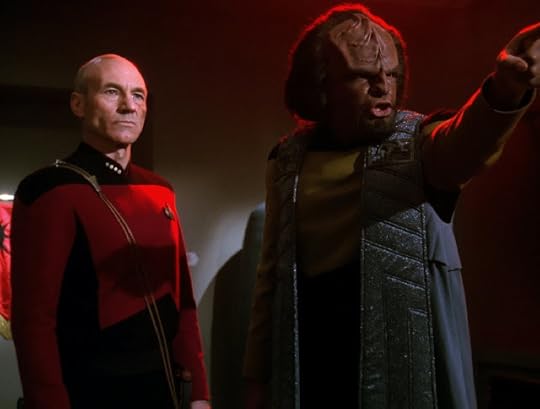
This is a significant development in the history of TNG as, if there was one clear turning point for the show, it was the transmission of “Sins of the Father”. Moore took two hopeful Klingon spec scripts and merged them into a story that unwittingly launched the series’ inaugural long-running story arc – a rich, Shakespearian epic that still stands up against Trek’s most renowned examples of world-building and storytelling. In less than forty-five minutes, Worf gained a brother (Tony Todd’s Kurn) and defended his family’s honour, only to tragically lose both in a fourth-act twist that left viewers reeling. For the first time in TNG – no, for the first time in Trek - the toys didn’t go back in the box at the end of the story. Worf was left stripped of his honour, his road to redemption waiting patiently to be walked.
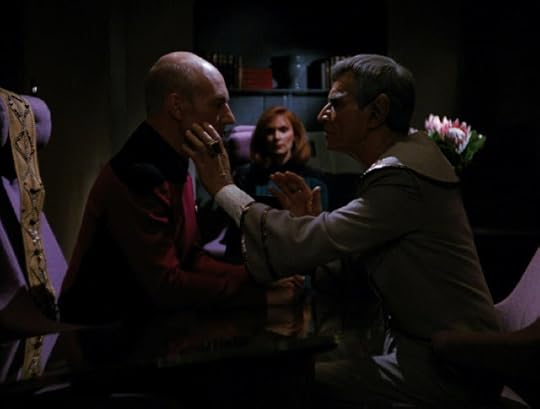
Before long, all the toys were coming out to play. Mark Lenard returned to the role he first played in 1967’s “Journey to Babel” episode for TOS, bringing Sarek aboard the Enterprise-D for a touching episode grounded in pride and regret. Exploring dementia in televised drama was a bold enough conceit for 1989, even in a Vulcaned-up emotional form, but temporarily transferring its affects onto the captain of the ship was even ballsier . The risk paid off, though - “Sarek” plays like a Patrick Stewart highlight reel as his character is suddenly forced to bear the strain of centuries of repressed emotion. Thankfully Ira Steven Behr browbeat Rick Berman into allowing the mind-melded Picard to cry out, “Spock!” in his delirium, in so doing explicitly tying TNG to its forerunner while putting a beautiful exclamation point on Spock’s father’s unspoken sorrow.
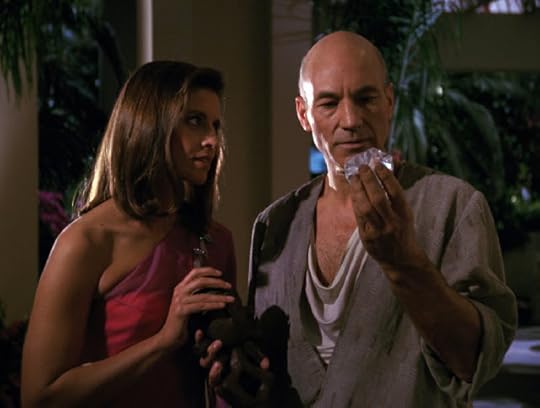
And whilst the season saw the obligatory returns of John de Lancie’s riotous Q (in the surprisingly pensive, if somewhat on the nose, “Déjà Q”) and Majel Barrett Roddenberry’s Lwaxana Troi (in the abovementioned “Ménage à Troi”), it also introduced us to new recurring characters. Within the space of a season, the show had a given rise to a sprawling mythology – one that would evolve over the next four seasons and into the movies, as well as sideways into Star Trek: Voyager (“Voyager”) and particularly Star Trek: Deep Space Nine (“DS9”) and even backwards into Enterprise. Andreas Katsulas made his first appearances as Picard’s Romulan foil, Commander Tomalak, during this run, while “Sins of the Father” introduced us to Charles Cooper’s fat Klingon Chancellor K’mpec and Patrick Massett’s loathsome Duras in addition to Worf’s big scary bro. Meanwhile, my favourite-ever Star Trek character, Colm Meaney’s Chief O’Brien, began to feature more heavily ahead of his elevation to near series regular status in Season 4, and the unforgettable frolic “Hollow Pursuits” introduced Dwight Schultz’s (The A-Team) Reginald Barclay – a brilliant engineer but socially feeble holo-addict who served as a walking, talking slap in the face to Gene Roddenberry’s vision of utopia. Fortunately for the ailing Gene – and, indeed, Patrick Stewart, who was famously keen to get into some “fucking and fighting” – balance would be restored by the unashamedly Kirk-like “Captain’s Holiday”, which introduced the lovely Jennifer Hetrick as Picard’s reckless lover, Vash in a mad treasure-hunt romp that, unaccountably, managed to emphasise the captain’s ubiquitous uptightness rather than see it shed.
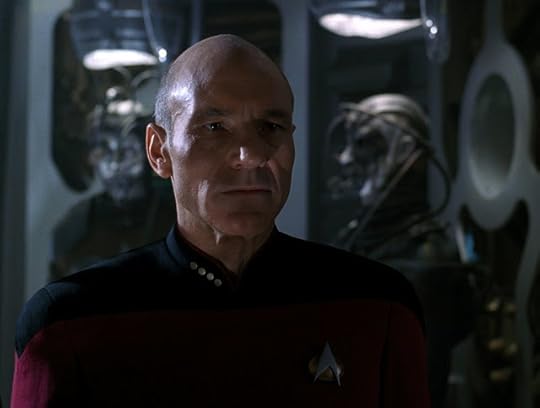
Of course, by far the most outstanding aspect of the third season is its finale, which, intended or otherwise, announced to the world that the show had arrived. Single-handedly written by Michael Piller, whose tribute piece graces this set’s bonus disc, “The Best of Both Worlds” remains much more than a mere fan favourite - it’s a famous piece of television history that I discuss in greater depth here in my review of its own Blu-ray release. Following the completion of its 1080p regeneration, CBS separately released a feature-length edit of both the third season finale (included in this set) and fourth season opener (included in the next set) on Blu-ray as well as giving “The Best of Both Worlds” a limited theatrical run.

The downside to this approach was that those who didn’t intend to purchase “The Best of Both Worlds” Blu-ray, or indeed any TNG two-parters turned features, found themselves missing the next instalment in the Blu-rays’ in-depth documentary series - the final instalment of Resistance is Futile ends on almost as much of a cliffhanger as “The Best of Both Worlds” itself. This trend would continue with the North American-exclusive stand-alone releases of “Redemption”, “Unification”, “Chain of Command” and, most markedly, “All Good Things…” – a release only made worthwhile even to hardened collectors by virtue of its bonus material. Whilst I don’t applaud CBS’s money-spinning approach, I do respect it – TNG’s restoration project was exorbitantly expensive for the company, and it had to recoup that expenditure somehow, otherwise the even costlier high-def remastering of DS9 and Voyager would never have a chance of getting off the ground. With the complete TNG box set now struggling to sell even when it’s offered for less than fifty quid, it’s little surprise that we’re now almost five years on from the release of TNG Season 7 with no word on when, or indeed if, we can look forward to the first season of DS9 on Blu-ray.
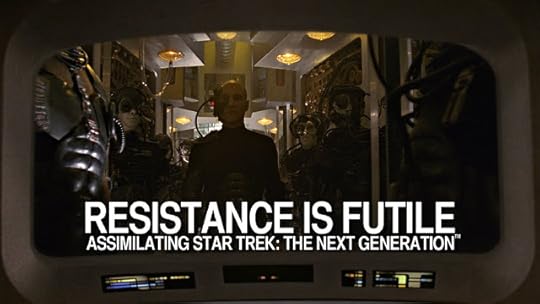
Yet whilst Regeneration: Engaging the Borg is notable in its absence, all of the special features that accompanied the third season on DVD are preserved in this set, albeit in their original standard-definition format. The various LCARS-framed mission overviews, departmental briefings and selected crew analyses included here are all perfectly adequate, even a good deal more exhaustive than most contemporary releases’ bonus material, but they are now completely outshone by the quality – and candour – of the new features. Resistance is Futile: Assimilating the Next Generation is divided into three half-hour instalments: “Biological Distinctiveness”, “Technological Distinctiveness” and “The Collective”, with the first two focusing primarily on the writers’ room before the show’s stars join to share their reminiscences in the final part, with especial emphasis on Jonathan Frakes who talks at length about how “Paramount University” prepared him to take on directorial duties. Compared to the interviews used in the DVD special features from more than a decade earlier, there is a marked shift in the tone of the contributors here, who are just as quick to condemn the failings of the studio; their colleagues; and even themselves as they are to accept the plaudits for show’s many successes. Not only is this approach more enlightening for those of us watching, but it helps us to appreciate how much of a triumph TNG really is.
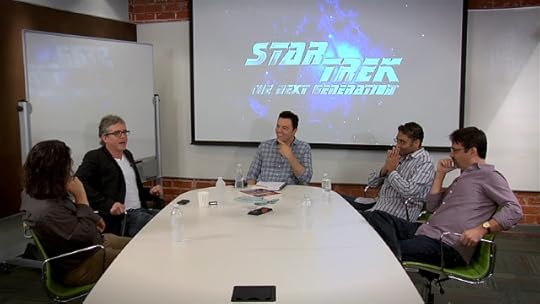 Above: Inside the Writer’s Room with (L-R) Ronald D Moore, Brannon Braga, Seth MacFarlane, Naren Shankar and René Echevarria
Above: Inside the Writer’s Room with (L-R) Ronald D Moore, Brannon Braga, Seth MacFarlane, Naren Shankar and René EchevarriaInside the Writer’s Room, Seth MacFarlane’s sit-down with many of the TNG writers, runs for almost as long as the three-part documentary and covers much the same ground. However, the roundtable is a much more informal affair; there is a palpable sense of fun as four old friends (Ronald D Moore, Brannon Braga, Naren Shankar and René Echevarria) reunite to celebrate – and, occasionally, slag off – their former working environment. What’s evident from this feature that isn’t so much from Resistance is Futile is the camaraderie that existed between TNG’s “next generation” of writers – a family feeling that was clearly transposed onto the small screen through their depiction of the Enterprise-D crew.
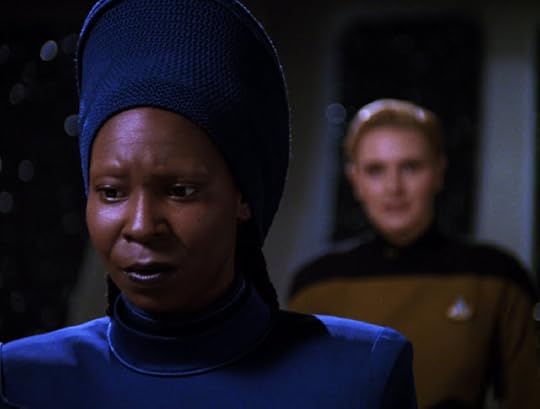
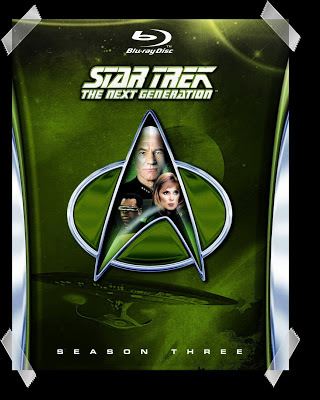 The collection also benefits from a number of commentaries on select episodes – the Okudas are joined by the episodes’ respective writers on “The Bonding” and “The Offspring”, with visual effects designer Dan Curry also joining them for “Sins of the Father”. “Yesterday’s Enterprise” boasts two well-deserved commentary tracks – the first is a lively affair featuring Ronald D Moore, Ira Steven Behr and the Okudas; the second features director David Carson alone with his memories. The set is rounded out with the usual assortment of episodic promos, the obligatory gag reel and, this time, a couple of tributes: one for the late, great Michael Piller; another for guest star David Rappaport, who took his own life during the making of “The Most Toys”.
The collection also benefits from a number of commentaries on select episodes – the Okudas are joined by the episodes’ respective writers on “The Bonding” and “The Offspring”, with visual effects designer Dan Curry also joining them for “Sins of the Father”. “Yesterday’s Enterprise” boasts two well-deserved commentary tracks – the first is a lively affair featuring Ronald D Moore, Ira Steven Behr and the Okudas; the second features director David Carson alone with his memories. The set is rounded out with the usual assortment of episodic promos, the obligatory gag reel and, this time, a couple of tributes: one for the late, great Michael Piller; another for guest star David Rappaport, who took his own life during the making of “The Most Toys”. As with both preceding releases, the visual quality of the show is out of this world. The third season looks even better in 1080p than the first two seasons did, as the renovated set and improved uniforms can be better appreciated – there is more detail to see. Now, when I watch Patrick Stewart execute the so-called “Picard Maneuver” – a visual cue that is as much synonymous with great television as it is impractical costume design – that red really pops, and that black is... not quite as black as the great expanse of space outside, but as black as it should be. The soundscape is, if anything, more striking still. TNG has always sounded good, even in its original, rumbling 2.0 Dolby Surround form, but with eight channels now being fully utilised, it’s hard to imagine the show ever sounding any more immersive than this.

There is no argument about it, TNG’s third season put it on the map. True to its new executive producer’s mandate, every single episode – except “Ménage à Troi”, obviously – was about a character’s growth, and every single episode was “about something”. The BBC wouldn’t broadcast “The High Ground” as it dared to explore terrorism from both sides. “The Hunted” served as a damning indictment of society’s failure to help war veterans return to society – a particularly prescient issue on the eve of the Gulf War. “The Defector” and “The Enemy” turned the Romulans from faceless adversaries into relatable foes with wives and children, yet without undermining the threat that they posed. “Hollow Pursuits” addressed hiding behind technology decades before it was a thing; Reg could just have easily been living through his iPhone and watching virtual-reality porn as hiding in the holodeck - the character arc would have been exactly the same. “Yesterday’s Enterprise” took a trope as well-trodden as time travel and slammed into another – that of the parallel world – yet still managed to tell a simple, moving story about a lost soul falling in love. Trek at its best.
Discommendation. Assimilation...
Recommendation.

The Star Trek: The Next Generation – Season Three Blu-ray is still available to buy, with today’s cheapest retailer being Base who have it listed for £19.29 with free delivery. Alternatively, The Full Journey Blu-ray box set, which includes all seven seasons (but omits the separately released TV movies and their bonus material) is still available. Amazon are currently cheapest at £65.00 with free delivery, but if you are in no rush to buy, it’s worth bearing in mind that the price often drops to almost half that.
The season’s remastered HD episodes are currently streaming on Netflix, and digital copies are available to buy from both iTunes and Amazon Instant Video for £2.49 each or £39.99 for the whole season. The Blu-ray’s bonus material is exclusive to the physical release.
Published on July 01, 2019 13:35
May 14, 2019
TV Review | Game of Thrones: “The Bells” by D B Weiss & David Benioff

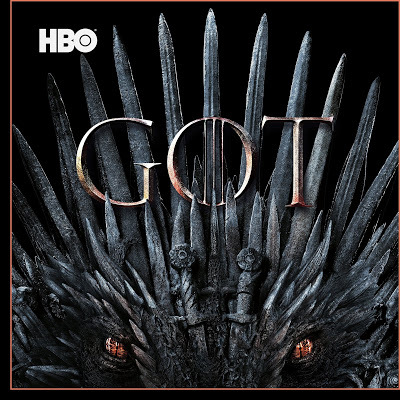 Dark in every sense, “The Long Night” finally put paid to the otherworldly threat posed by the Night King and his Army of the Dead, and it did so in spectacular, unashamedly fan-pleasing fashion. Yet it was with a saddening sense of vindication that I watched all of its significant plot points play out exactly as I had expected, right down to Jorah and Theon’s (admittedly signposted) deaths and, critically, Arya’s last-minute slaying of the Night King. Reading the latter being described as a “twist” in tabloid reviews made me laugh out loud; the show had been overtly building up to it for seven years. We’re talking about a girl whose life after her father’s first-season execution had been nothing but a detailed study in death. On the one hand, I took great pleasure in seeing the fantastic side of Martin’s rich and brutal epic culminate in the way that I’d thought – and hoped – it would, but on the other I was intensely disappointed that the series had lost its capacity to surprise me. To my agony and elation, though, “The Bells” proved to be a perfect counterpoint to “The Long Night”. Endlessly inventive, this time around seasoned battle director Miguel Sapochnik took us down to street level to witness a terrifying assault from far above. Broad daylight illuminated every chink in the characters’ armour as I watched everything that I thought I knew about them, and about
Game of Thrones
, crumble before me.
Dark in every sense, “The Long Night” finally put paid to the otherworldly threat posed by the Night King and his Army of the Dead, and it did so in spectacular, unashamedly fan-pleasing fashion. Yet it was with a saddening sense of vindication that I watched all of its significant plot points play out exactly as I had expected, right down to Jorah and Theon’s (admittedly signposted) deaths and, critically, Arya’s last-minute slaying of the Night King. Reading the latter being described as a “twist” in tabloid reviews made me laugh out loud; the show had been overtly building up to it for seven years. We’re talking about a girl whose life after her father’s first-season execution had been nothing but a detailed study in death. On the one hand, I took great pleasure in seeing the fantastic side of Martin’s rich and brutal epic culminate in the way that I’d thought – and hoped – it would, but on the other I was intensely disappointed that the series had lost its capacity to surprise me. To my agony and elation, though, “The Bells” proved to be a perfect counterpoint to “The Long Night”. Endlessly inventive, this time around seasoned battle director Miguel Sapochnik took us down to street level to witness a terrifying assault from far above. Broad daylight illuminated every chink in the characters’ armour as I watched everything that I thought I knew about them, and about
Game of Thrones
, crumble before me.Since moving beyond George R R Martin’s published works and into that mysterious “roadmap” he reportedly laid out for HBO, Thrones has faced a number of challenges, and one of the greatest of these has been trying to emulate Martin’s gift for striking dialogue. The Song of Ice and Fire author’s fecund lyricism may have inspired a surge of never-ending riffs on lines spoken on the show years earlier, but it wasn’t until last week, when Tyrion said, “We may have defeated Them, but we still have Us to contend with,” that it felt like the show had finally recaptured its old t-shirt-slogan magic. But Tyrion’s line heralded more than just the return of wily wordplay - “The Last of the Starks” was a near-perfect episode, the like of which hasn’t been seen since the show’s fourth season. Underlying every look, every exchange, even every fuck was a tangible sense of unease. The whole episode felt like a coiled spring. Despite the steady flow of wine, there was a chilling sobriety to the hand of the queen’s wise words. Even before learning of Jon’s true lineage and the inevitable dissent that knowledge of it would bring, Tyrion knew that the real enemy wasn’t the manifestation of mortal dread but the divisions between those who’d survived it. In a sentence, the dwarf had become the cleverest man in Westeros once again – and he’d never looked more troubled. As a viewer, though, I couldn’t have been happier. Thrones really was whittling down to a flawed human squabble #ForTheThrone.
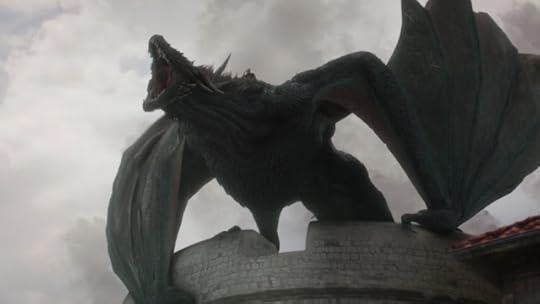 “We won the Great War. Now let’s win the Last War.”
“We won the Great War. Now let’s win the Last War.”With the exception of its obligatory Cleganebowl, which I had pretty much written the stage directions for in my post-“Long Night” predictions, the series’ penultimate episode delivered a relentless precession of shock and awe. Even its more contemplative opening act, which continued this season’s welcome steer back towards the addictive and complex intrigues that first put the show on the map, was ultimately defined by dragonfire and the lingering of an old adage from the books that would set the stall for the rest of the episode: “Every time a Targaryen is born, the gods toss a coin and the world holds its breath...” You see, “The Bells” wouldn’t “just” be the eight-years-in-the-making final battle for King’s Landing. It wouldn’t even just be Varys’s metaphorical coin completing its rotation before crashing to ground aflame. It would be the most shocking episode of the series since the Red Wedding in “The Rains of Castamere” six years ago; perhaps the biggest double-flip in the whole of entertainment since the WWF’s Bret “Hit Man” Hart exchanged cheers for jeers with “Stone Cold” Steve Austin at WrestleMania 13.
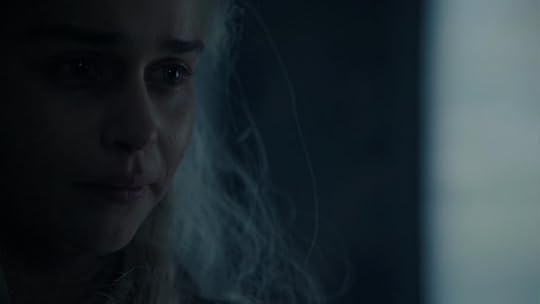 “Let it be fear.”
“Let it be fear.” We don’t know by how much the showrunners have accelerated Daenerys’ fall from grace, but I wouldn’t be surprised if it didn’t eventually fill Martin’s final book, A Dream of Spring, should it ever see publication. The whole saga may be replete with examples of Dany’s ruthlessness, with such instances becoming more frequent and intense the closer she gets to the Iron Throne and the corrupting power that it offers, but in this final run she has fallen farther and faster than I would have ever imagined possible. To the writers’ credit, though, their accelerated take on the story works, and works very well – the abruptness of her descent actually lends it credence when we consider the devastating losses that she’s suffered in quick succession: Viserion, Jorah, Rhaegal, Missandei. Every one of these cruel blows hardened her, ultimately leaving her alone and without good counsel (a soldier whose beloved was beheaded just seconds after telling them to burn the enemy doesn’t quite satisfy the test for “good counsel”, in my view, nor does a dwarf whose loyalties are torn), but nothing seems to have split her spirit so much as her epiphany at last week’s feast. It was all right there, written on her face – the dawning realisation that she could never be as loved a leader as Jon Snow is. Despite all that she’s endured, despite all that she’s accomplished, the biggest obstacle between her and the throne that she’s spent a lifetime looking to reclaim is the man that she loves. Further enraged by his apparent rejection of her as a lover (incest just isn’t in Jon’s wheelhouse), any semblance of restraint melts away and she becomes the very tyrant that she’s sworn to save future generations from the mercies of. It’s heartbreaking, and it’s understandable, and it’s real (which is really quite a statement when discussing a fire-resistant, dragon-riding character whose whole existence is couched in far-flung fantasy). It’s also true to her character, and true to her journey. As unpopular a move as it may be, this episode doesn’t so much turn Daenerys heel as complete her journey down a dark and lonely road that no-one can follow her down - and from which she can never return.
We don’t know by how much the showrunners have accelerated Daenerys’ fall from grace, but I wouldn’t be surprised if it didn’t eventually fill Martin’s final book, A Dream of Spring, should it ever see publication. The whole saga may be replete with examples of Dany’s ruthlessness, with such instances becoming more frequent and intense the closer she gets to the Iron Throne and the corrupting power that it offers, but in this final run she has fallen farther and faster than I would have ever imagined possible. To the writers’ credit, though, their accelerated take on the story works, and works very well – the abruptness of her descent actually lends it credence when we consider the devastating losses that she’s suffered in quick succession: Viserion, Jorah, Rhaegal, Missandei. Every one of these cruel blows hardened her, ultimately leaving her alone and without good counsel (a soldier whose beloved was beheaded just seconds after telling them to burn the enemy doesn’t quite satisfy the test for “good counsel”, in my view, nor does a dwarf whose loyalties are torn), but nothing seems to have split her spirit so much as her epiphany at last week’s feast. It was all right there, written on her face – the dawning realisation that she could never be as loved a leader as Jon Snow is. Despite all that she’s endured, despite all that she’s accomplished, the biggest obstacle between her and the throne that she’s spent a lifetime looking to reclaim is the man that she loves. Further enraged by his apparent rejection of her as a lover (incest just isn’t in Jon’s wheelhouse), any semblance of restraint melts away and she becomes the very tyrant that she’s sworn to save future generations from the mercies of. It’s heartbreaking, and it’s understandable, and it’s real (which is really quite a statement when discussing a fire-resistant, dragon-riding character whose whole existence is couched in far-flung fantasy). It’s also true to her character, and true to her journey. As unpopular a move as it may be, this episode doesn’t so much turn Daenerys heel as complete her journey down a dark and lonely road that no-one can follow her down - and from which she can never return. “Queen you shall be... until there comes another, younger and more beautiful, to cast you down and take all that you hold dear. And when your tears have drowned you, the valonqar shall wrap his hands about your pale white throat and choke the life from you.”
“Queen you shall be... until there comes another, younger and more beautiful, to cast you down and take all that you hold dear. And when your tears have drowned you, the valonqar shall wrap his hands about your pale white throat and choke the life from you.”In similar fashion, “The Bells” succeeds at evoking sympathy for a woman I’d long thought to be irredeemable. Lena Headey barely utters a word as her character watches her city burn. Her tight expression scarcely shifts. Even her total defeat is conveyed only by a single, simple tear. All the while, though, Cersei Lannister’s eyes are burning even more fiercely than King’s Landing itself. You know that she’s ruminating on everything that she’s done and everything that she’s endured. Her entire adult life has been dictated by a childhood prophecy; she was fixated on keeping her children alive (“Gold shall be their crowns and gold their shrouds…”), only to fail, and now her efforts to prevent her role being usurped by a queen younger and more beautiful have too come to nought. “The Bells” renders Cersei an impotent spectator as the latter part of Maggy the Frog’s prophecy plays out in a Hellish conflagration and she realises that the child she is carrying won’t ever see the world. Again, it might be unpopular with many, but for Cersei it really couldn’t have ended any other way. She said it herself, right back in the beginning: “You win or you die.” Having her go out with a sword in her hand or Needle in her back would have been wasteful. She had to have everything stripped from her again, one piece at a time: every soldier, every sellsword; even her bodyguard and her loyal hand. A queen is a symbol of power, and Cersei was forced to look on as the source of that power vanished before her. What made it all so bloody impressive, though, was the fact that the show managed to engender pity for her. At one point, despite everything, I was actually rooting for her to win, just as I was against the Faith Miltant in “The Winds of Winter”. There is always a greater evil, and from a certain angle even the darkest grey can look like shining white. Now that's the Game of Thrones that I fell in love with.
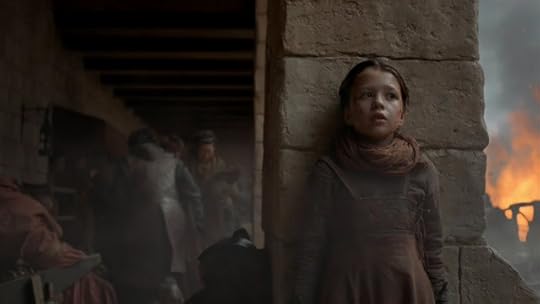
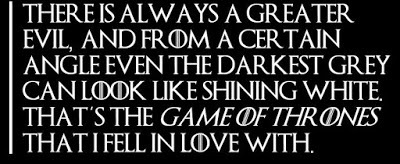 However, for a long time I was wed to the theory that Jaime, as Cersei’s slightly younger twin, would ultimately be the valonqar (“little brother”) prophesied to choke her to death rather than the more obvious Tyrion who, let’s face it, has both motive and form. Last week, as Jaime did his best to convince Brienne that he’s the evil bastard he’s long been purported to be, thereafter riding off towards King’s Landing, I was utterly convinced that Cersei would die with his hands – golden and otherwise – wrapped around her pale white throat. It seemed inevitable that she’d refuse to surrender to Dany and/or flee with Jaime; that Jaime would learn of Euron’s warming of her bed in his absence; and that the former Kingsguard commander would finally snap, thus bringing one of the most captivating character arcs in the saga to a thrilling and seemingly inexorable close. That wasn’t to be, though, with the show instead delivering what for me was the greatest shock of “The Bells”.
However, for a long time I was wed to the theory that Jaime, as Cersei’s slightly younger twin, would ultimately be the valonqar (“little brother”) prophesied to choke her to death rather than the more obvious Tyrion who, let’s face it, has both motive and form. Last week, as Jaime did his best to convince Brienne that he’s the evil bastard he’s long been purported to be, thereafter riding off towards King’s Landing, I was utterly convinced that Cersei would die with his hands – golden and otherwise – wrapped around her pale white throat. It seemed inevitable that she’d refuse to surrender to Dany and/or flee with Jaime; that Jaime would learn of Euron’s warming of her bed in his absence; and that the former Kingsguard commander would finally snap, thus bringing one of the most captivating character arcs in the saga to a thrilling and seemingly inexorable close. That wasn’t to be, though, with the show instead delivering what for me was the greatest shock of “The Bells”.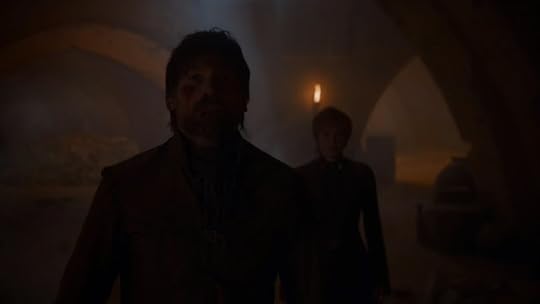 Of course, the problem with being so completely wrong-footed by a development is that it can really alienate you. Perhaps I should have smelled a rat when the show omitted the valonqar from Maggy’s prophecy back at the start of Season 5 – Weiss and Benioff have clearly had their endgame in mind for a long time now, and as this omission suggests, their endgame may not necessarily be Martin’s. However, despite feeling much like I imagine
The Last Jedi
’s detractors did as they watched Rian Johnson pull the rug out from under them, I still couldn’t help but be pulled into the emotion of the moment. Jaime might have been redeemed after his third-season ordeal in the eyes of many, but years later he was still prepared to trebuchet babies into Riverrun if that would get him back into Cersei’s arms more quickly, and it’s the feelings driving such extreme behaviour that “The Bells” exploits. Jaime wasn’t trying to convince Brienne of anything last week; he was being honest, and neither we nor her could accept it because we want to see the good in him. The truth is, though, his liberation from Cersei had simply forced to him face up to who he really is, and learn to accept it. That’s his tragedy - escaping the controlling clutches of the woman he loves, only to realise that he doesn’t want to. Just like Dany’s descent, it’s incredibly hard to watch, and even harder to stomach, but somehow Weiss and Benioff make you care about the plight of two amoral and incestuous siblings who have more blood on their hands than almost anyone else on the show. Jaime and Cersei’s despairing, romantic and ultimately tragic demise was one of the most raw and affecting death scenes that I’ve seen since Owen Harper’s raging demise in Torchwood’s “Exit Wounds” more than a decade ago. Even though it flew completely in the face of what I thought I wanted to see, I loved it nevertheless.
Of course, the problem with being so completely wrong-footed by a development is that it can really alienate you. Perhaps I should have smelled a rat when the show omitted the valonqar from Maggy’s prophecy back at the start of Season 5 – Weiss and Benioff have clearly had their endgame in mind for a long time now, and as this omission suggests, their endgame may not necessarily be Martin’s. However, despite feeling much like I imagine
The Last Jedi
’s detractors did as they watched Rian Johnson pull the rug out from under them, I still couldn’t help but be pulled into the emotion of the moment. Jaime might have been redeemed after his third-season ordeal in the eyes of many, but years later he was still prepared to trebuchet babies into Riverrun if that would get him back into Cersei’s arms more quickly, and it’s the feelings driving such extreme behaviour that “The Bells” exploits. Jaime wasn’t trying to convince Brienne of anything last week; he was being honest, and neither we nor her could accept it because we want to see the good in him. The truth is, though, his liberation from Cersei had simply forced to him face up to who he really is, and learn to accept it. That’s his tragedy - escaping the controlling clutches of the woman he loves, only to realise that he doesn’t want to. Just like Dany’s descent, it’s incredibly hard to watch, and even harder to stomach, but somehow Weiss and Benioff make you care about the plight of two amoral and incestuous siblings who have more blood on their hands than almost anyone else on the show. Jaime and Cersei’s despairing, romantic and ultimately tragic demise was one of the most raw and affecting death scenes that I’ve seen since Owen Harper’s raging demise in Torchwood’s “Exit Wounds” more than a decade ago. Even though it flew completely in the face of what I thought I wanted to see, I loved it nevertheless. The greatest performance in “The Bells”, though, was Kit Harington’s. In a tragic mirror of the look that Daenerys wore at last week’s feast, there is a moment when you can see Jon suffer the exact same epiphany – and he’s no more happy about it than she was. With the lines between good and evil blurring around him as the Dothraki return to their old ways; the Northerners turn to rape and pillage; and even Greyworm leads the Unsullied into massacring Lannister troops who’ve thrown down their arms in surrender, the fog almost visibly lifts before him. Watching the woman he loves razing a city to the ground, watching her – as Sapochnik goes to great pains to harrowingly illustrate – burn innocent children to death, Jon’s posture changes as, once again, the weight of the world is heaved back up onto his shoulders, and, knowing him, all the blame for it too. He knows that there’s no way back for Dany now, just as we do, and it’s with clear resignation that he beats his retreat out of King’s Landing, no doubt bound for next week’s final showdown with his auntie ex.
The greatest performance in “The Bells”, though, was Kit Harington’s. In a tragic mirror of the look that Daenerys wore at last week’s feast, there is a moment when you can see Jon suffer the exact same epiphany – and he’s no more happy about it than she was. With the lines between good and evil blurring around him as the Dothraki return to their old ways; the Northerners turn to rape and pillage; and even Greyworm leads the Unsullied into massacring Lannister troops who’ve thrown down their arms in surrender, the fog almost visibly lifts before him. Watching the woman he loves razing a city to the ground, watching her – as Sapochnik goes to great pains to harrowingly illustrate – burn innocent children to death, Jon’s posture changes as, once again, the weight of the world is heaved back up onto his shoulders, and, knowing him, all the blame for it too. He knows that there’s no way back for Dany now, just as we do, and it’s with clear resignation that he beats his retreat out of King’s Landing, no doubt bound for next week’s final showdown with his auntie ex.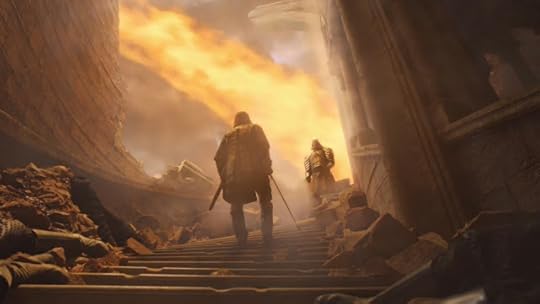 As showdowns go, Jon’s with Daenerys will have to work damned hard to top this episode’s. Euron’s swaggering demise at the hands - hand - of Jaime was an ugly, messy, catch-as-catch-can slog of an encounter that had me teetering on the brink of my seat throughout, and the long-awaited clash between the Hound and his brother the Mountain managed to live up to all the staggering hype surrounding it. Fair dues, there had been no good reason for it to happen – whilst the Hound has always hated his brother, it’s only been since fans started clamouring for them to square off that he’s made it his mission to either put him down or die trying – but their battle was executed flawlessly nonetheless, and the writers even imbued it with a narrative purpose, using it to not only to bring closure to the long-running Arya / Hound arc, but do so in such a way that it might even save Arya from herself. Moreover, with Drogon circling and spitting out fire, the Red Keep collapsing around them and Qyburn’s pulped body at their feet it was by far the series’ most visually arresting one-on-one bout, and it gives the Hound a far more fitting send-off than some other beloved side characters – here’s looking at you, Ghost.
As showdowns go, Jon’s with Daenerys will have to work damned hard to top this episode’s. Euron’s swaggering demise at the hands - hand - of Jaime was an ugly, messy, catch-as-catch-can slog of an encounter that had me teetering on the brink of my seat throughout, and the long-awaited clash between the Hound and his brother the Mountain managed to live up to all the staggering hype surrounding it. Fair dues, there had been no good reason for it to happen – whilst the Hound has always hated his brother, it’s only been since fans started clamouring for them to square off that he’s made it his mission to either put him down or die trying – but their battle was executed flawlessly nonetheless, and the writers even imbued it with a narrative purpose, using it to not only to bring closure to the long-running Arya / Hound arc, but do so in such a way that it might even save Arya from herself. Moreover, with Drogon circling and spitting out fire, the Red Keep collapsing around them and Qyburn’s pulped body at their feet it was by far the series’ most visually arresting one-on-one bout, and it gives the Hound a far more fitting send-off than some other beloved side characters – here’s looking at you, Ghost.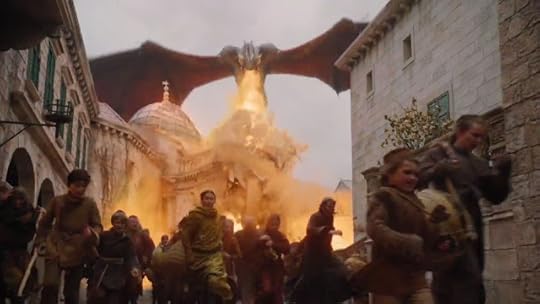 A keen fan of Tolkien, and The Lord of the Rings in particular, George R R Martin suggested years ago that A Song of Ice and Fire would conclude with a Westerosi version of “The Scouring of the Shire” – the thematically crucial penultimate chapter of The Return of the King that, thanks to Peter Jackson, will be unfamiliar to those who’ve only seen Jackson’s cinematic adaptations. “The Scouring of the Shire” always resonated with me because, in a bold departure from the literary norm, it dared to follow the Rings trilogy’s fiery finale with an anti-climactic skirmish as the weary Hobbits try to take back their home from Saruman. Tolkien was brave enough to remind a post-war world that the fight is never really over. That those who’ve sacrificed everything to save the world can’t ever really go back to living in it. War doesn’t just kill, it tarnishes and corrupts. Having Game of Thrones concluding with a modern, more nuanced take on Tolkien’s most profound and overlooked piece of work is an absolute masterstroke on Martin’s part, and I applaud the showrunners for respecting it.
A keen fan of Tolkien, and The Lord of the Rings in particular, George R R Martin suggested years ago that A Song of Ice and Fire would conclude with a Westerosi version of “The Scouring of the Shire” – the thematically crucial penultimate chapter of The Return of the King that, thanks to Peter Jackson, will be unfamiliar to those who’ve only seen Jackson’s cinematic adaptations. “The Scouring of the Shire” always resonated with me because, in a bold departure from the literary norm, it dared to follow the Rings trilogy’s fiery finale with an anti-climactic skirmish as the weary Hobbits try to take back their home from Saruman. Tolkien was brave enough to remind a post-war world that the fight is never really over. That those who’ve sacrificed everything to save the world can’t ever really go back to living in it. War doesn’t just kill, it tarnishes and corrupts. Having Game of Thrones concluding with a modern, more nuanced take on Tolkien’s most profound and overlooked piece of work is an absolute masterstroke on Martin’s part, and I applaud the showrunners for respecting it. 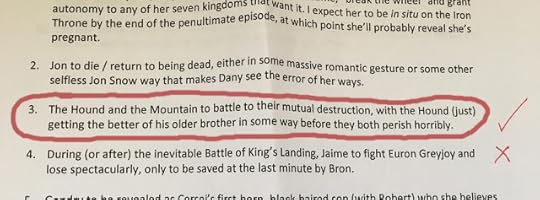 Above: Some of my predictions made after “The Long Night”. Well, one out of fifteen ain’t bad. And so now, for the first time in a long time I have absolutely no idea how the series is going to end next week. Will Arya kill Daenerys, as the writers seem to – far, far too obviously – be setting up? Or has Varys already done the deed with the “weapon of women and eunuchs”? Who will Bronn kill with his crossbow now that his would-be paymistress and half of his targets are dead? Does anyone fancy Davos’s chances of survival, given the role that he played in helping Tyrion to free Jaime? Will Jon really end up sitting on the Iron Throne? Or will he retire into the North, Frodo-style, to reunite with Ghost and leave the ruling to Tyrion, Sansa - or even Bran? Could Dany survive and break the wheel after all? Does Sam have a book to write...? And wasn’t there supposed to be some mystical, Old-Gods significance to direwolves...?
Above: Some of my predictions made after “The Long Night”. Well, one out of fifteen ain’t bad. And so now, for the first time in a long time I have absolutely no idea how the series is going to end next week. Will Arya kill Daenerys, as the writers seem to – far, far too obviously – be setting up? Or has Varys already done the deed with the “weapon of women and eunuchs”? Who will Bronn kill with his crossbow now that his would-be paymistress and half of his targets are dead? Does anyone fancy Davos’s chances of survival, given the role that he played in helping Tyrion to free Jaime? Will Jon really end up sitting on the Iron Throne? Or will he retire into the North, Frodo-style, to reunite with Ghost and leave the ruling to Tyrion, Sansa - or even Bran? Could Dany survive and break the wheel after all? Does Sam have a book to write...? And wasn’t there supposed to be some mystical, Old-Gods significance to direwolves...?
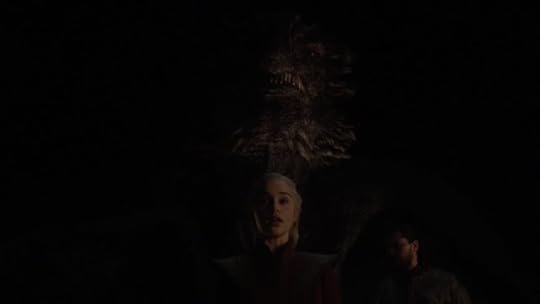
It might have drawn the ire of a large proportion of its viewership (as does anything which dares to not pander to its audience these days, sadly), but in setting fire to expectations Weiss and Benioff have restored Game of Thrones to its rightful place as king – no, queen - of shocking event television. Long live the Mad Queen, Westeros's answer to Darth Vader, with all the triumph and tragedy thereto. Next up: “Episode LXXIII: A New Hope”...
The first five episodes of Game of Thrones' final season are available to stream on NOW TV , with the final episode scheduled to drop on Monday 20th May. If you start a seven-day free trial now, you will get to watch the whole season for free!
Alternatively, the whole season will be available to download from iTunes in 1080p from Tuesday 21st May for just £16.99 - incredible value when you take into account that a newly released movie sells for £13.99 in the iTunes Store, and this season is effectively comprised of six! The season is also listed on Amazon Prime Video, with the episodes due to drop the same day as on iTunes, but as of the time of writing no price is given and the season is not available for pre-order. There is no word yet on a UK 4k or Blu-ray release.
Published on May 14, 2019 14:51
E.G. Wolverson's Blog
- E.G. Wolverson's profile
- 52 followers
E.G. Wolverson isn't a Goodreads Author
(yet),
but they
do have a blog,
so here are some recent posts imported from
their feed.



